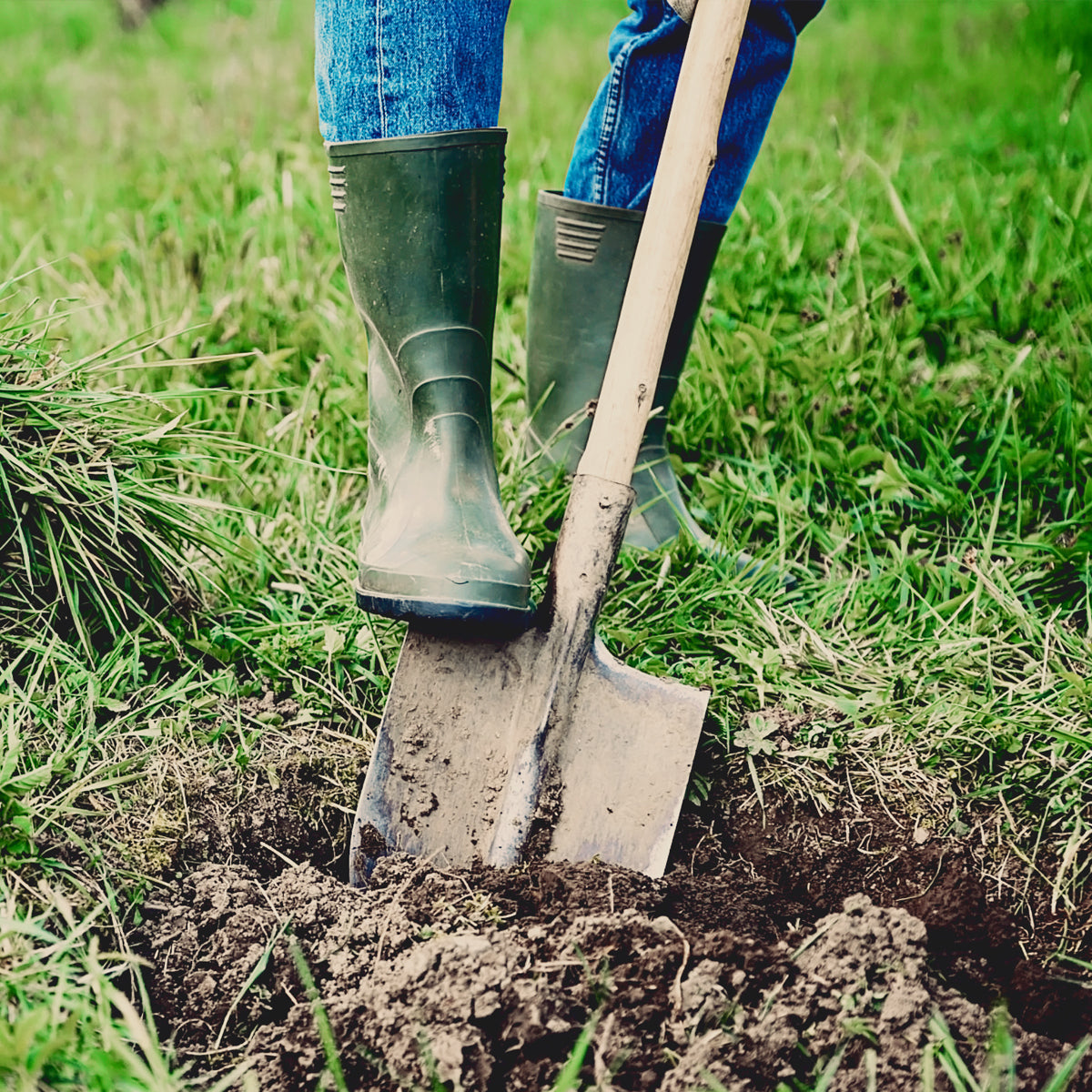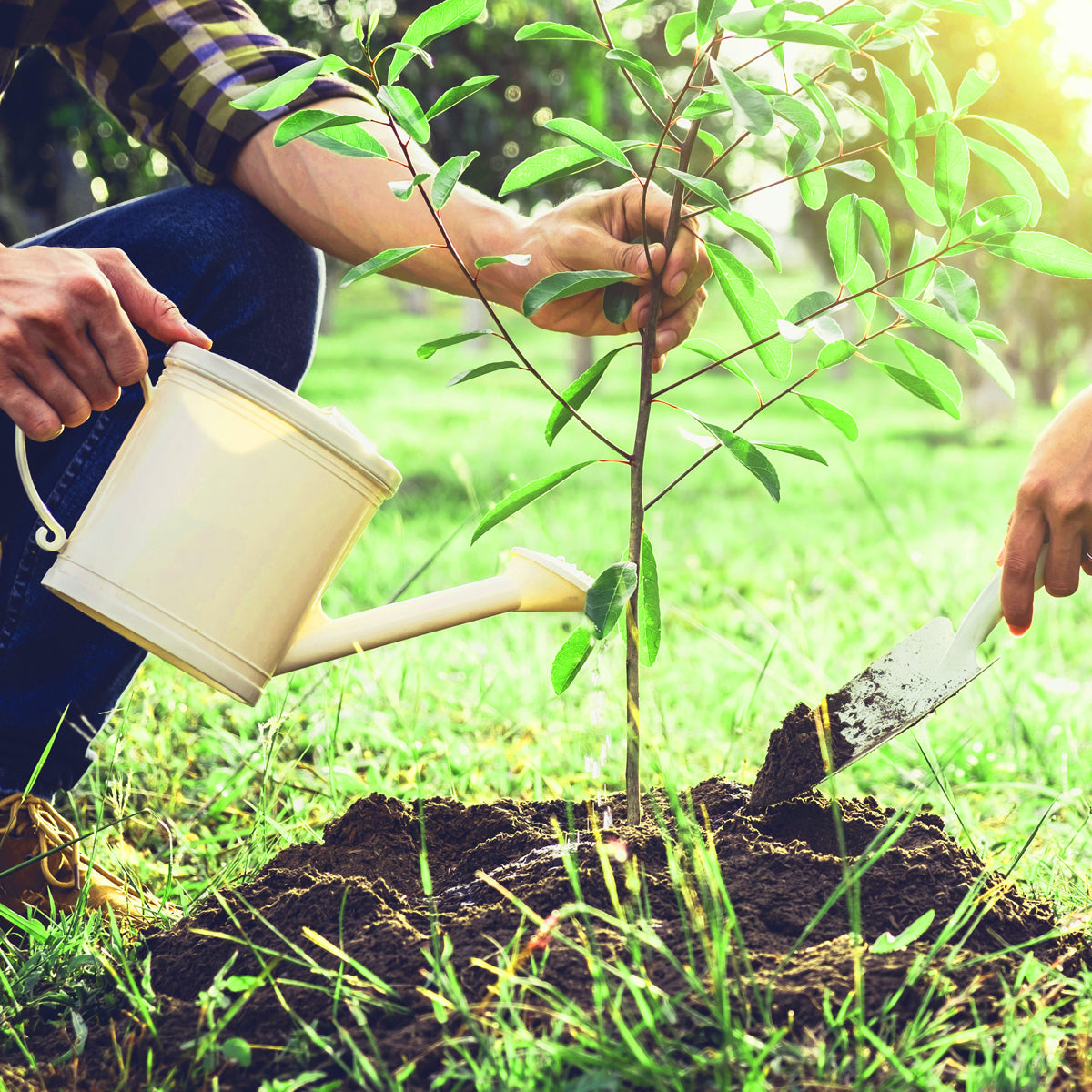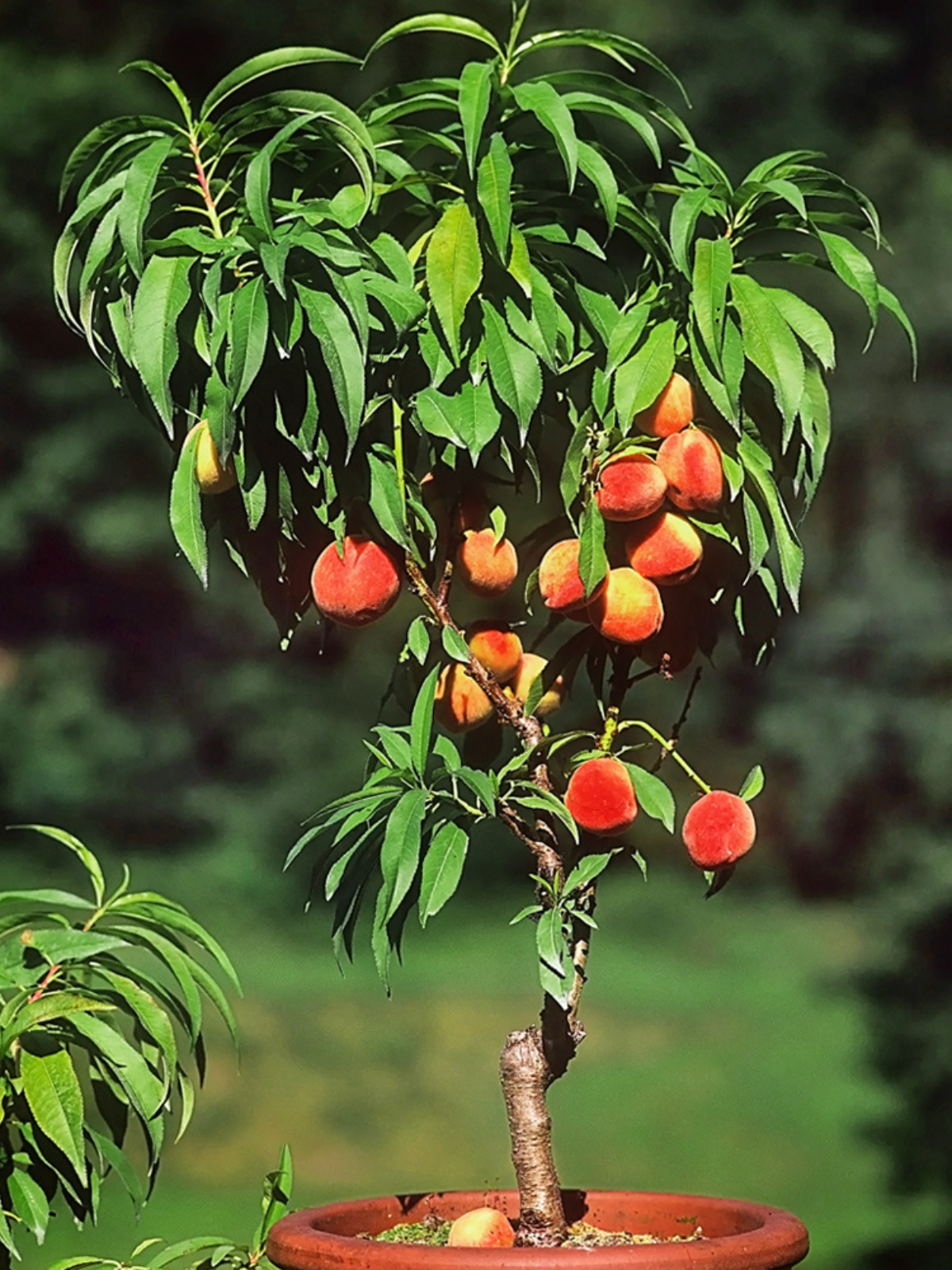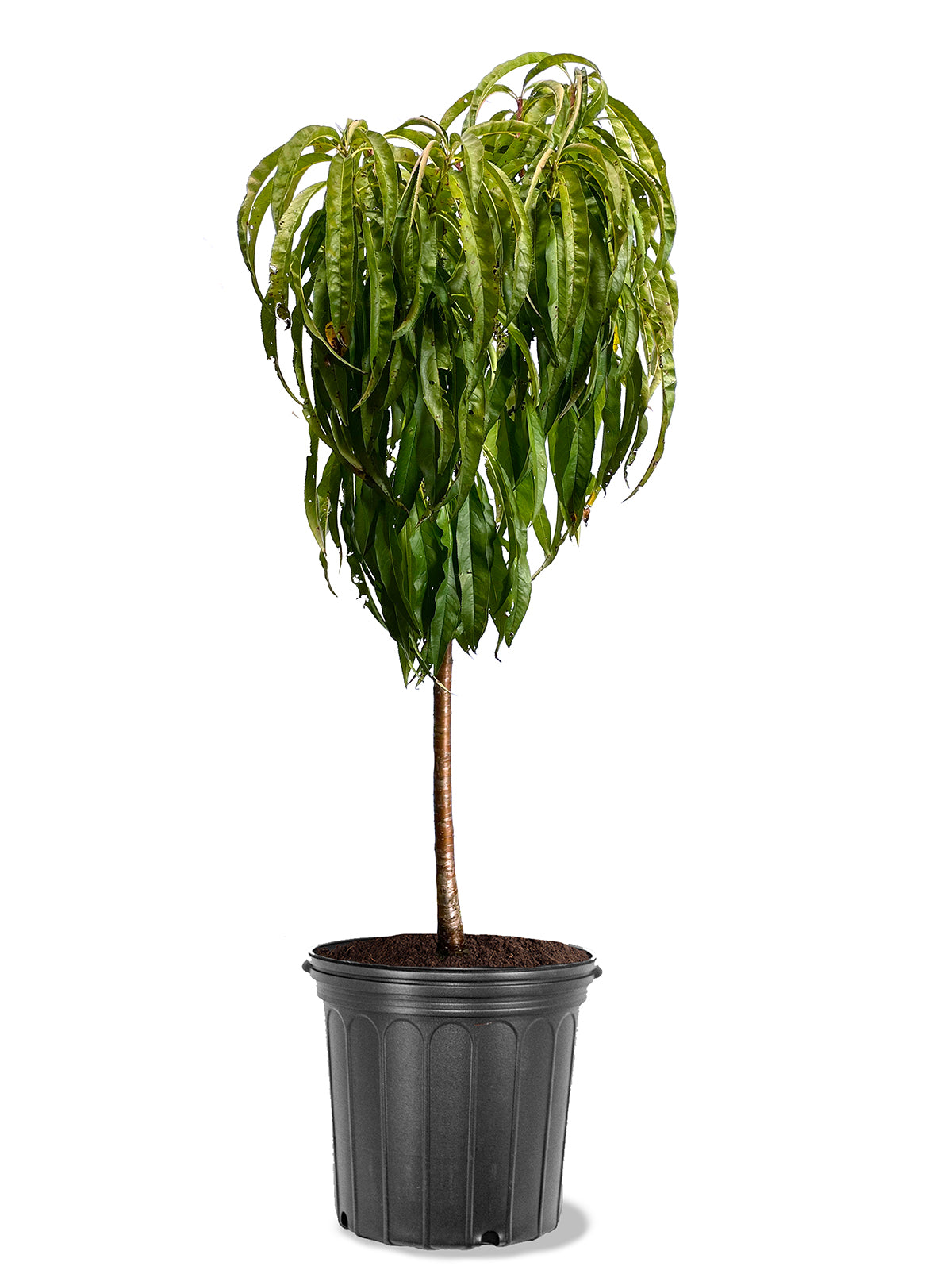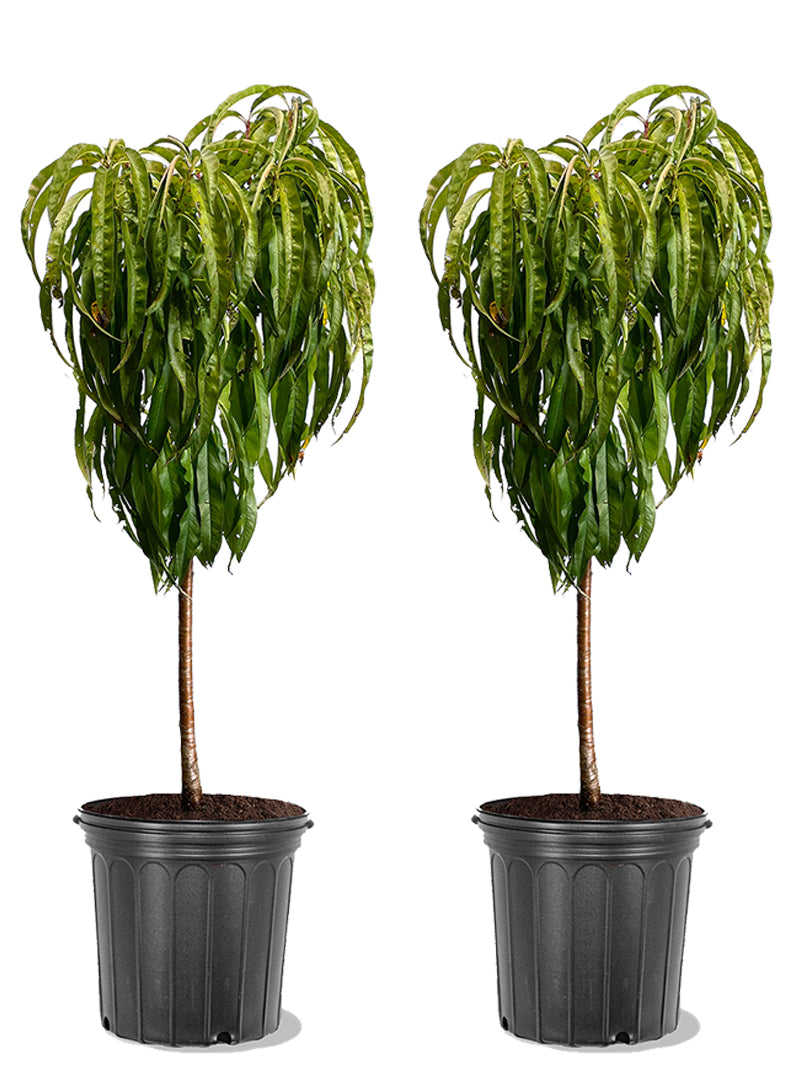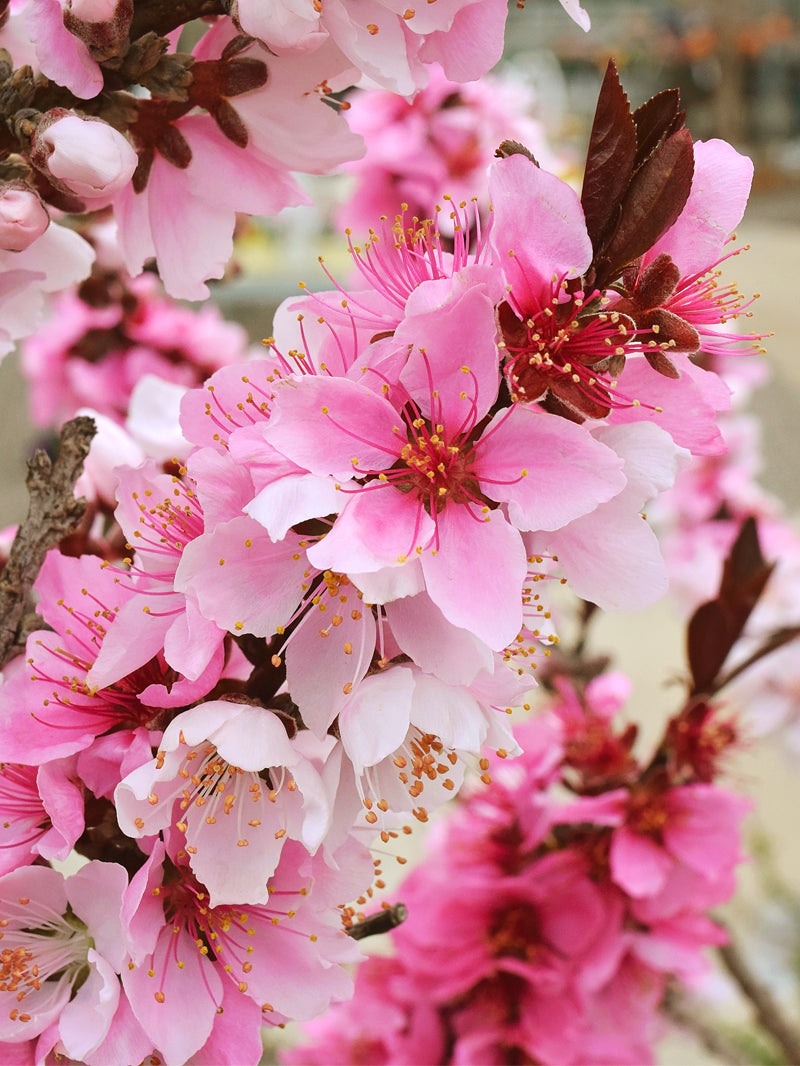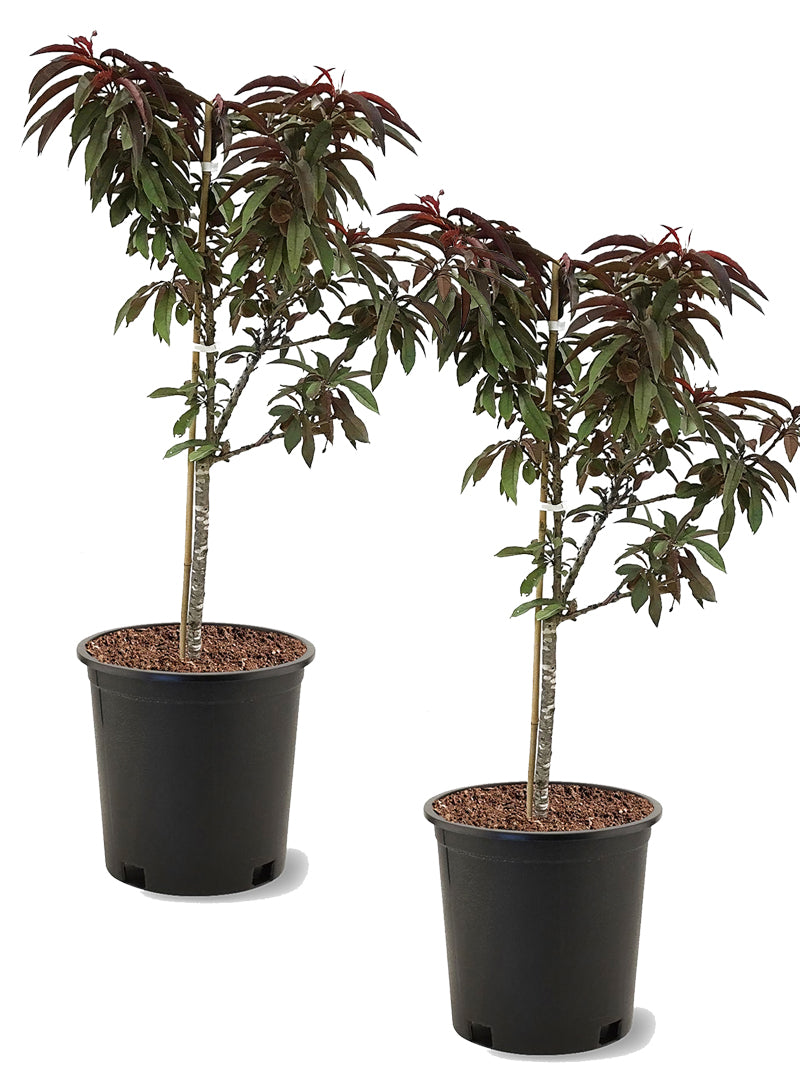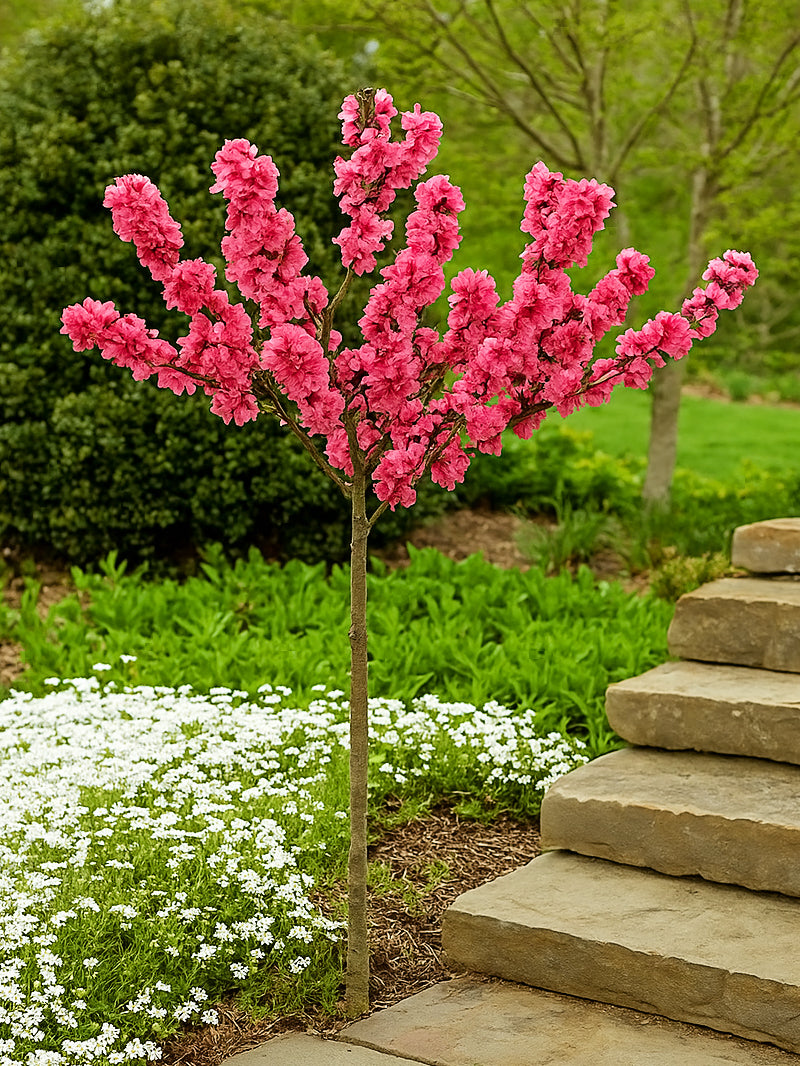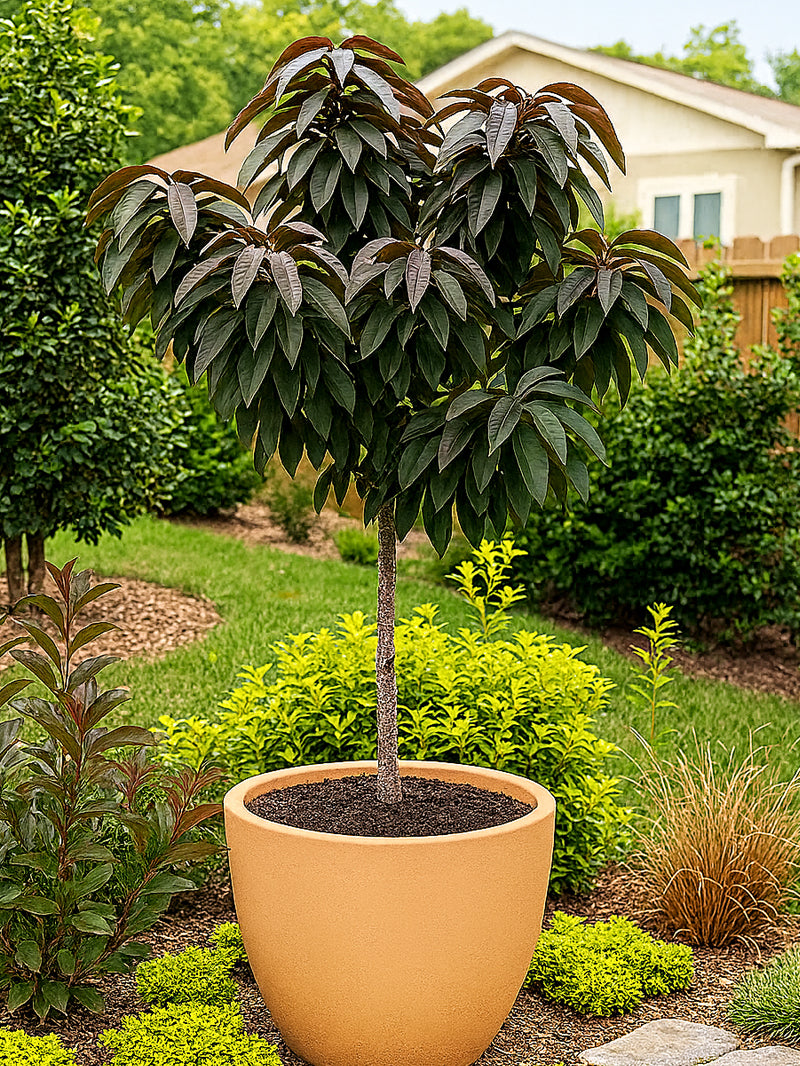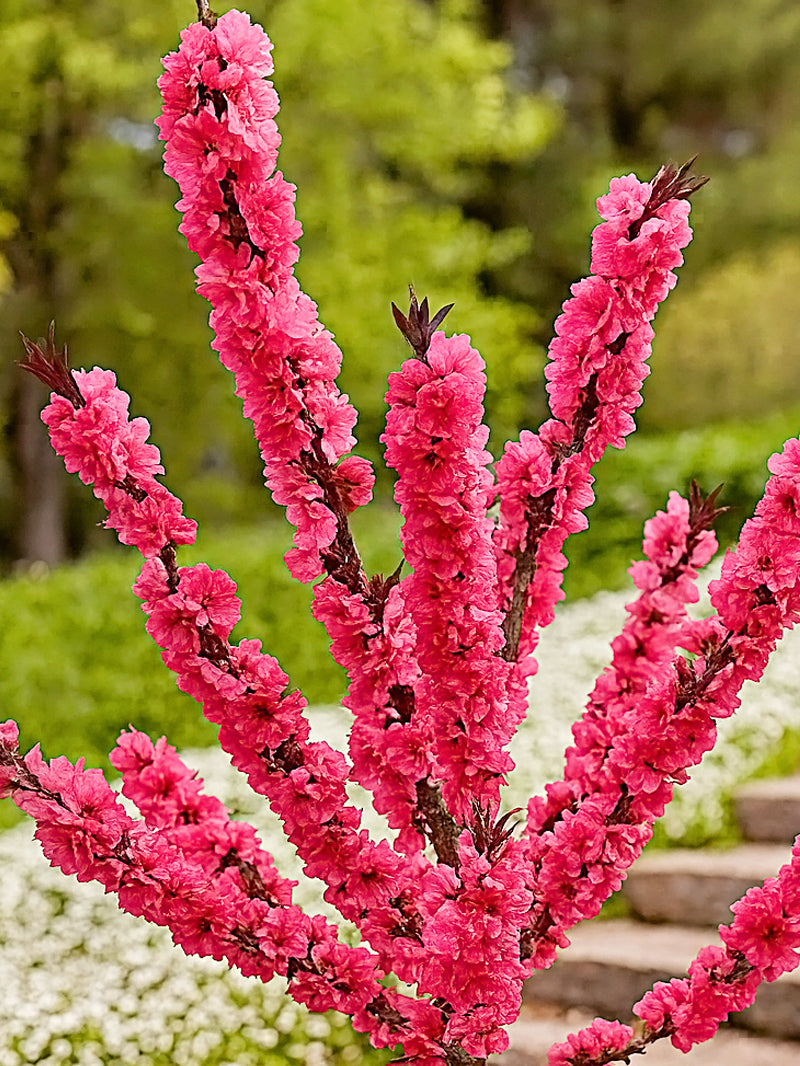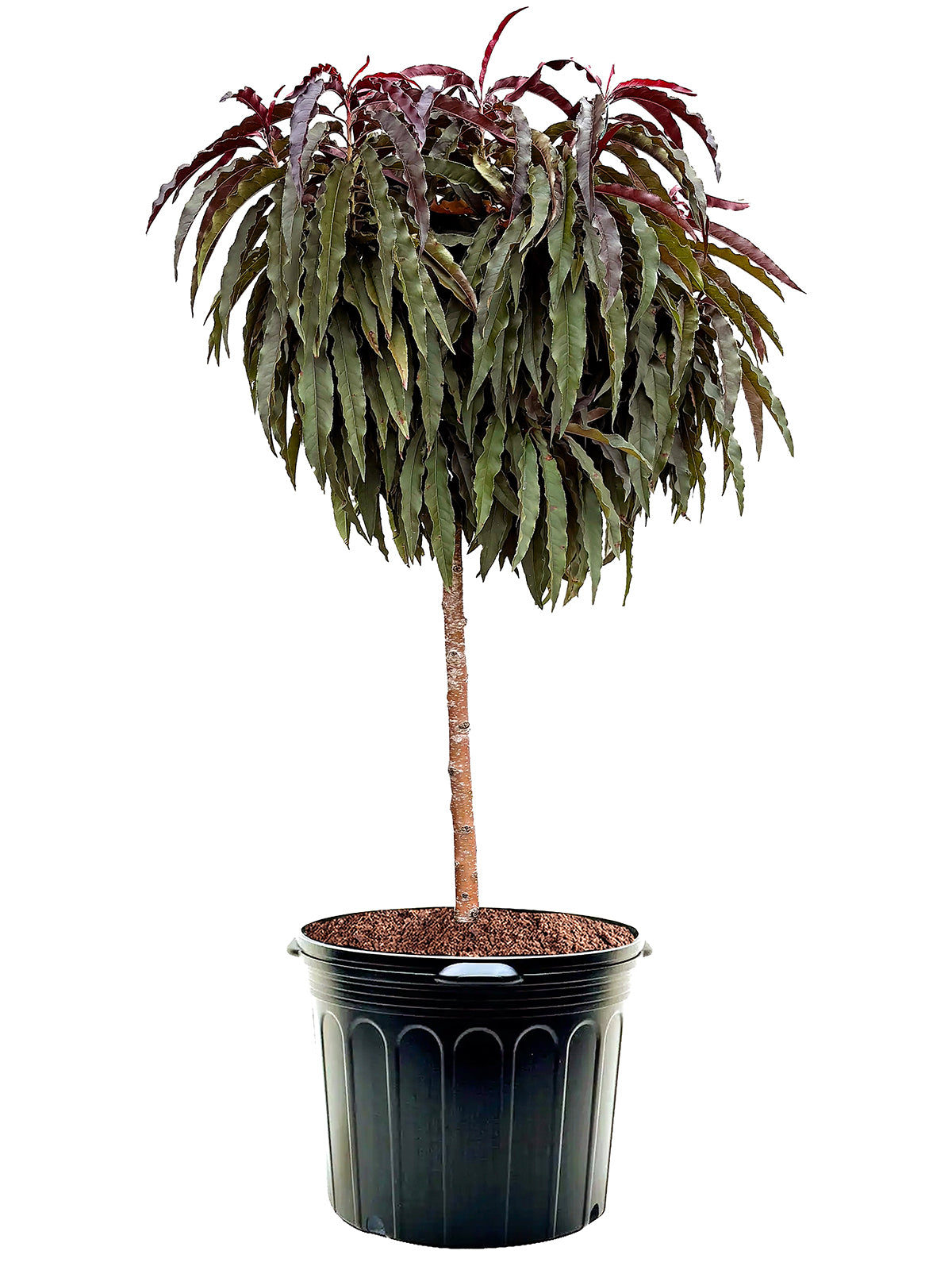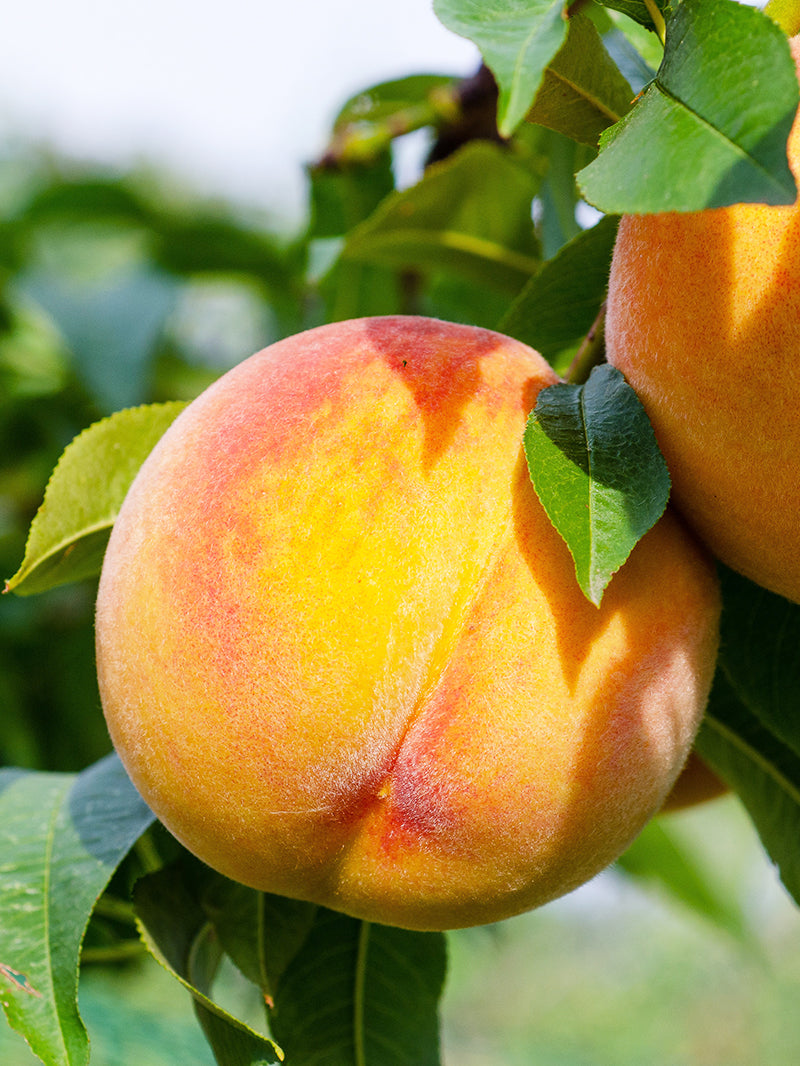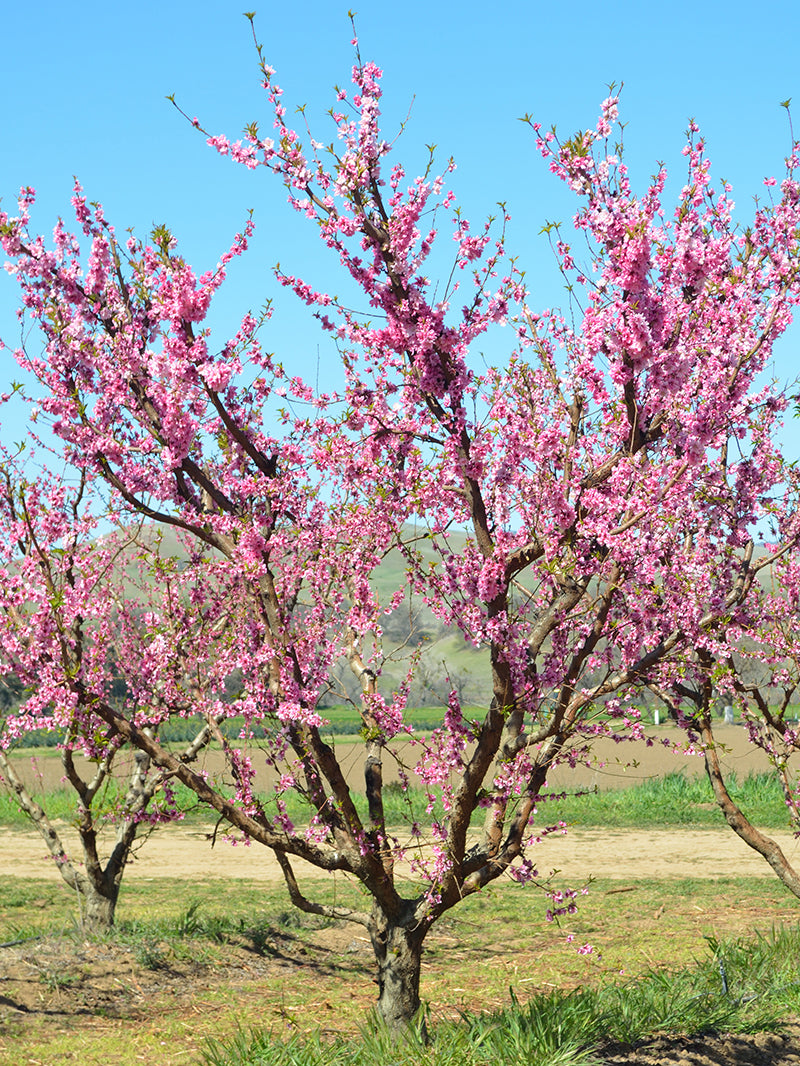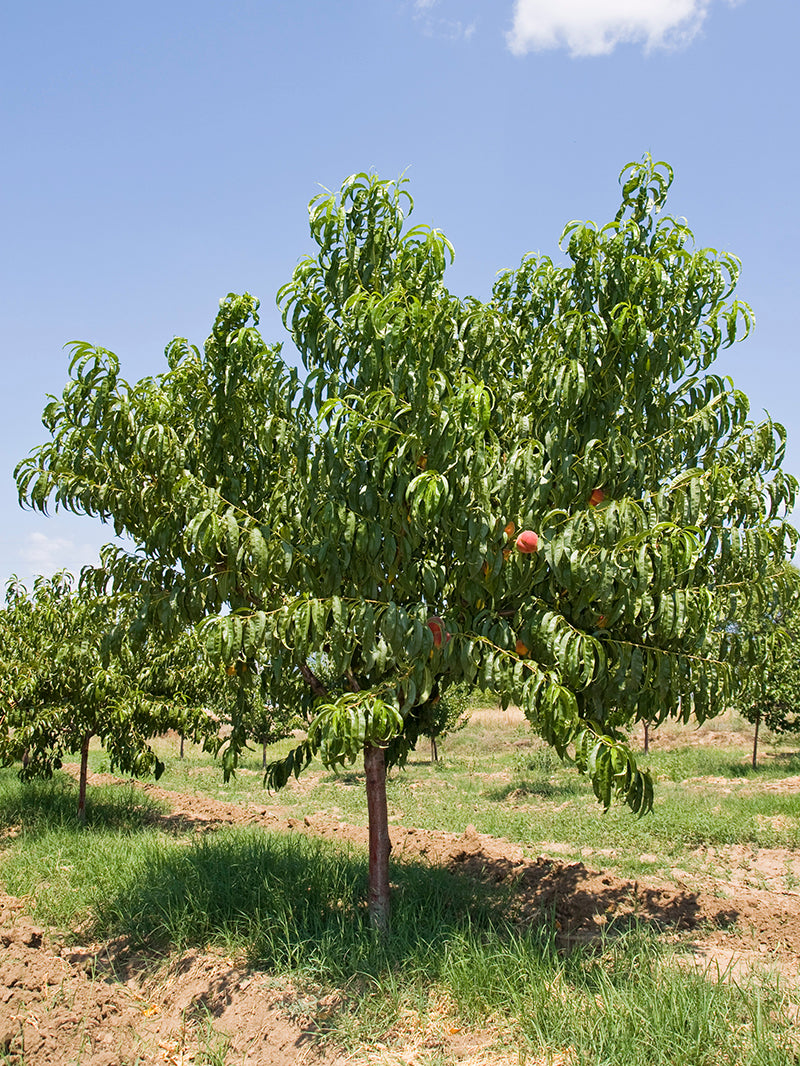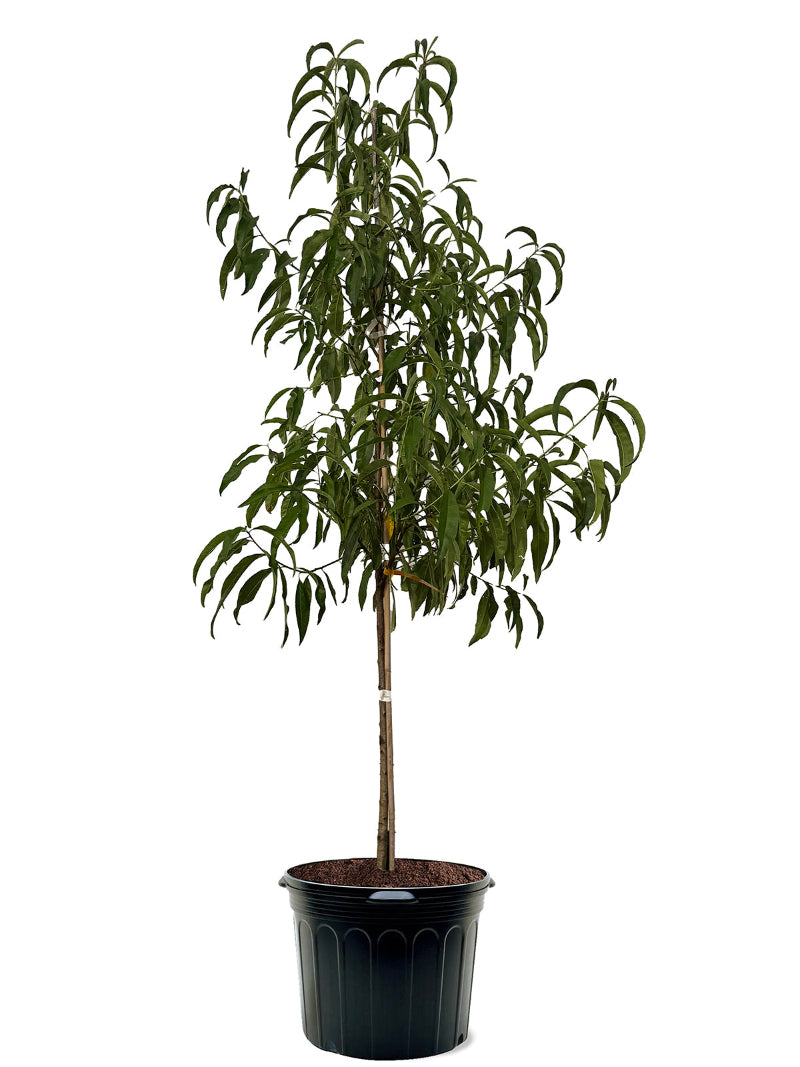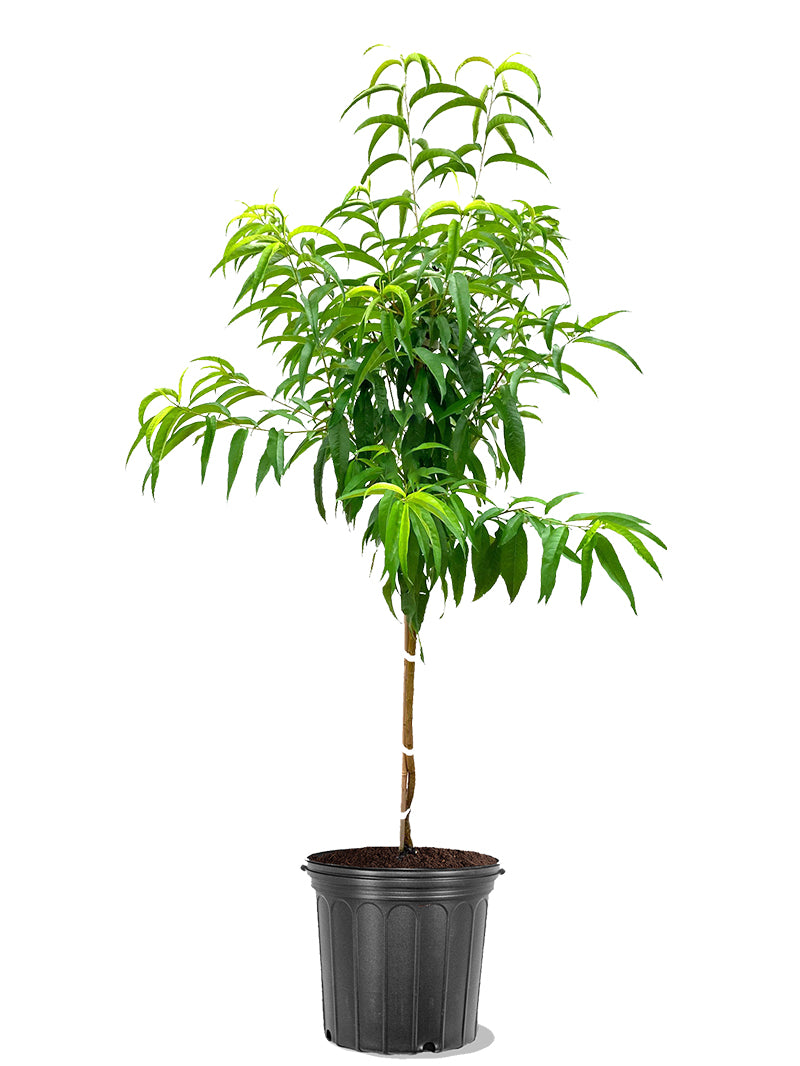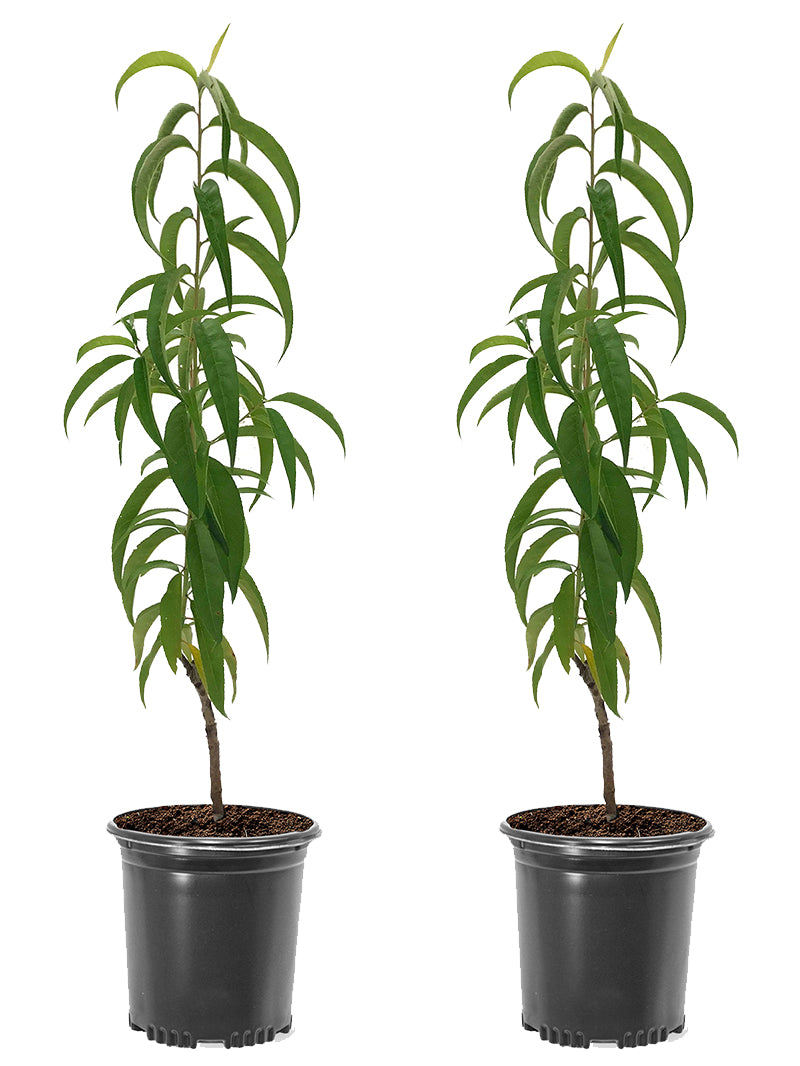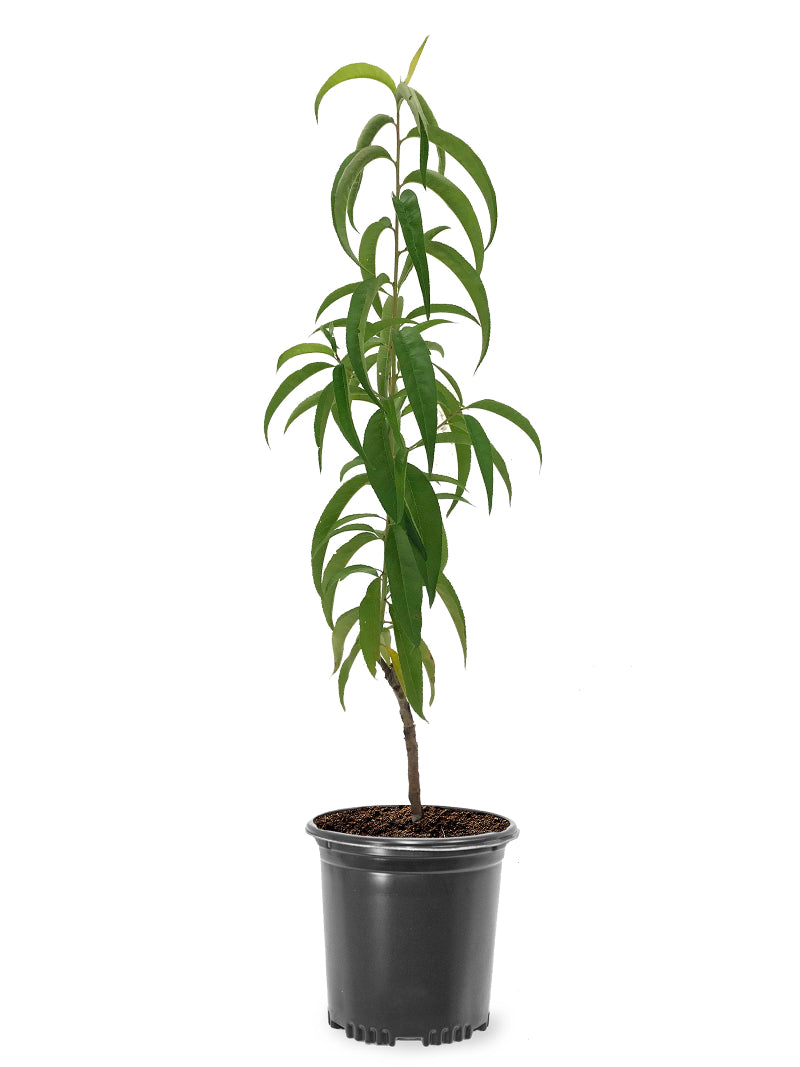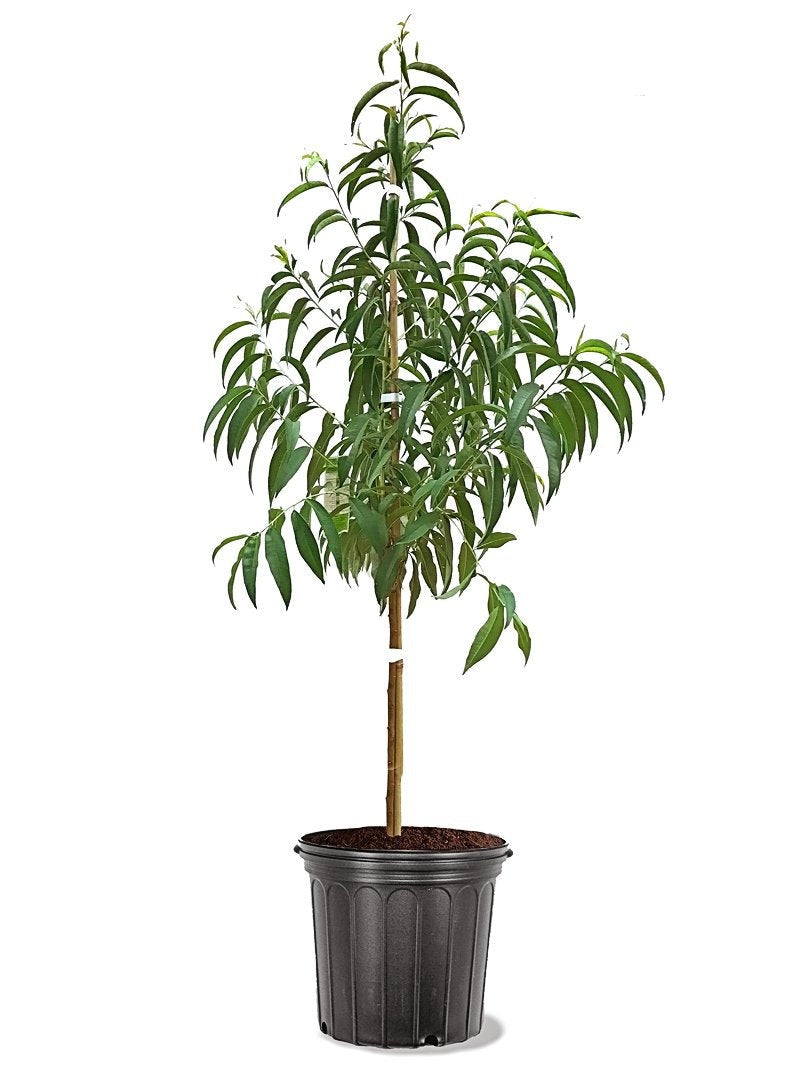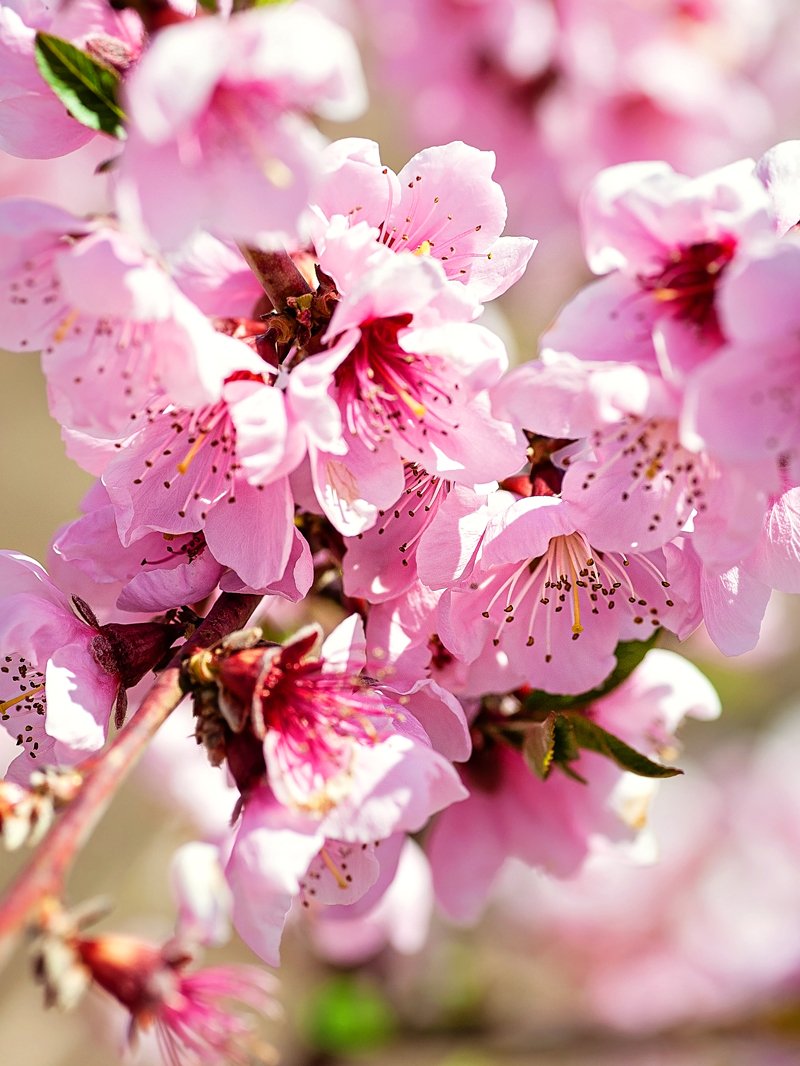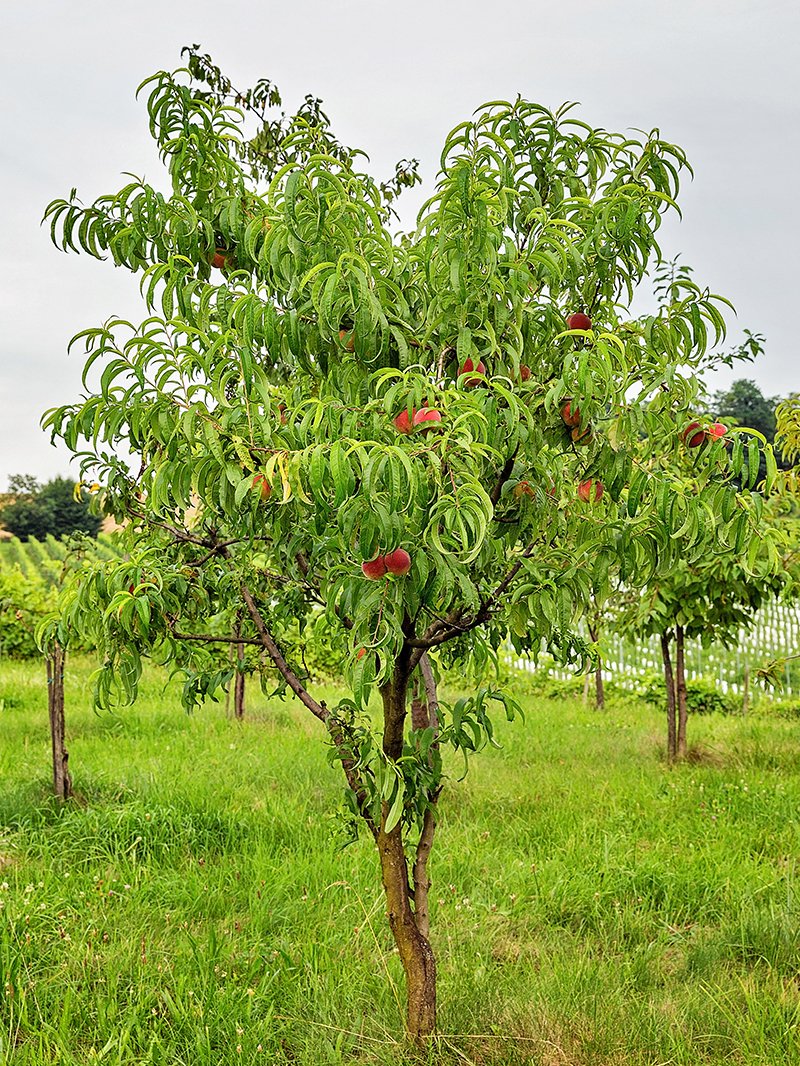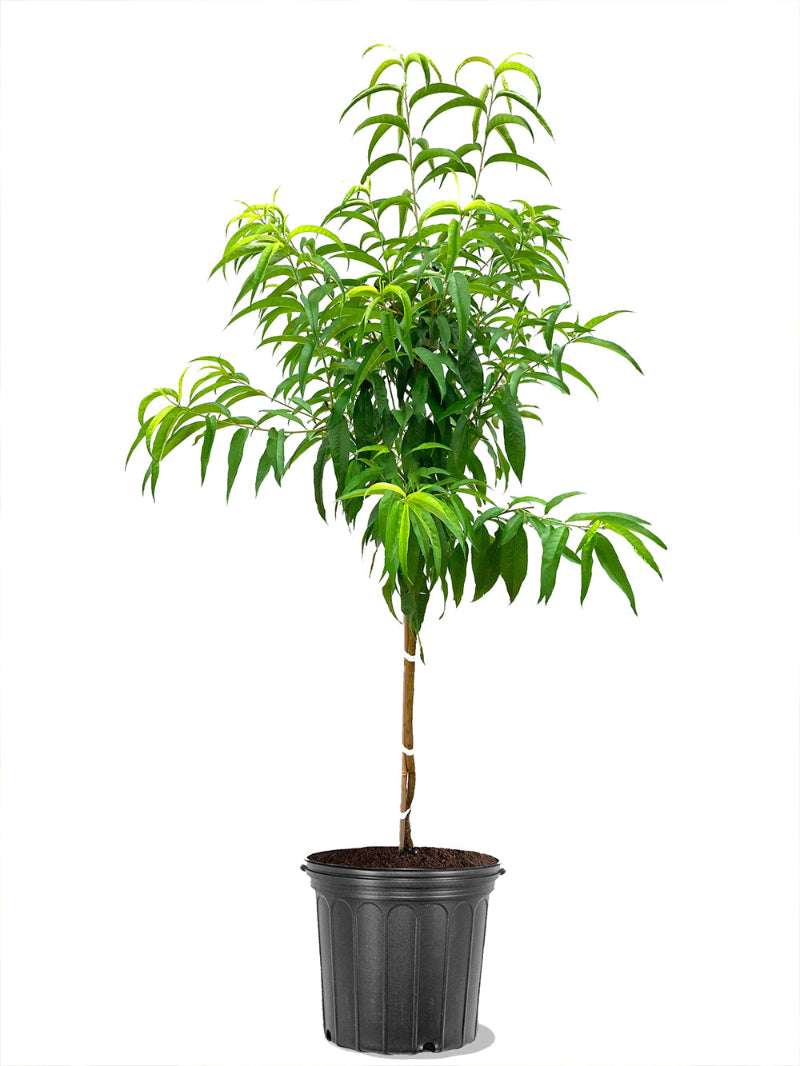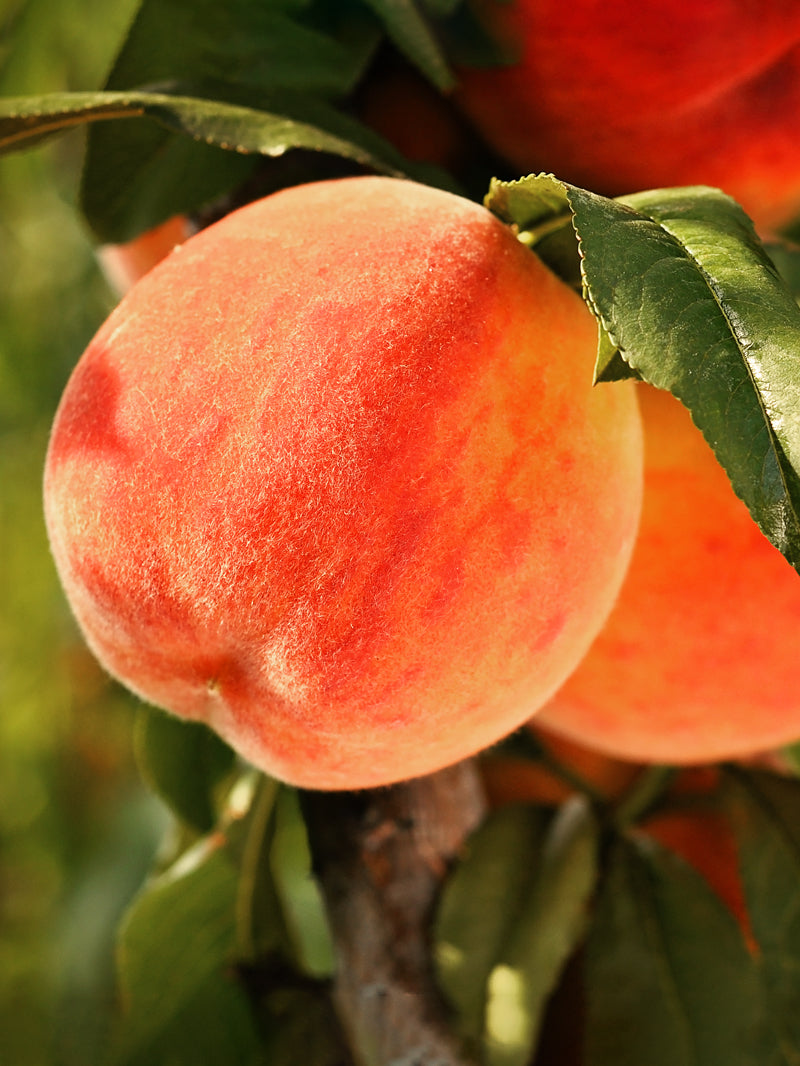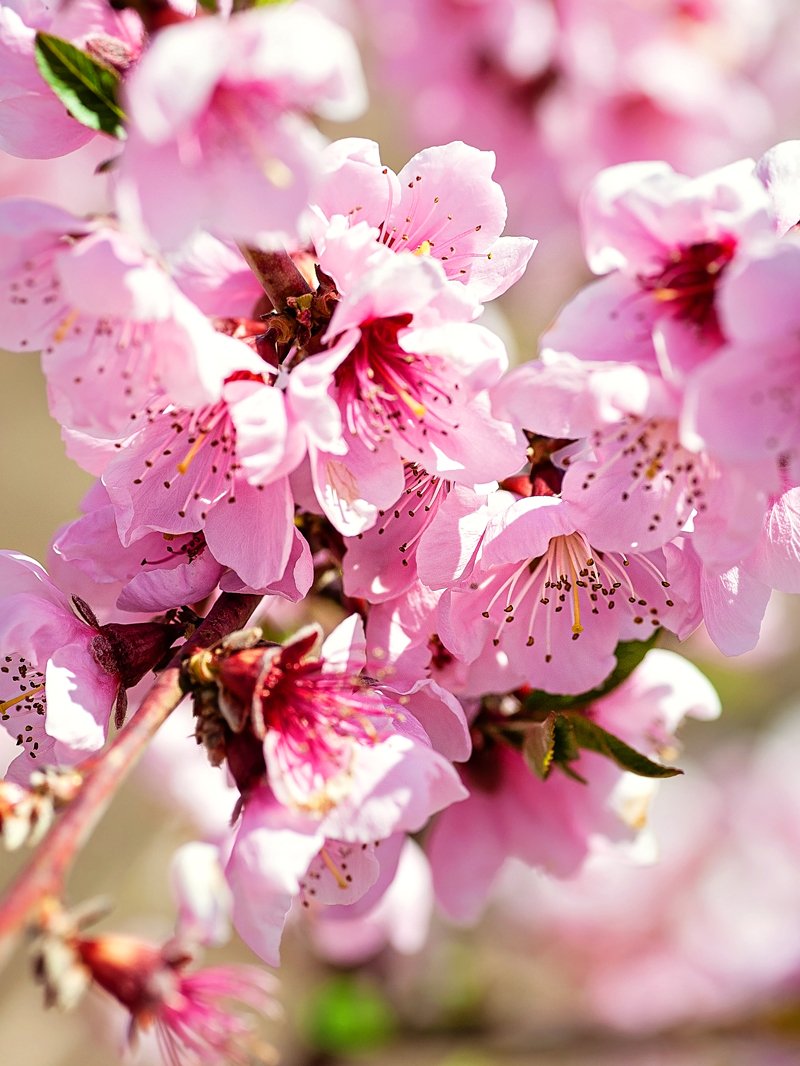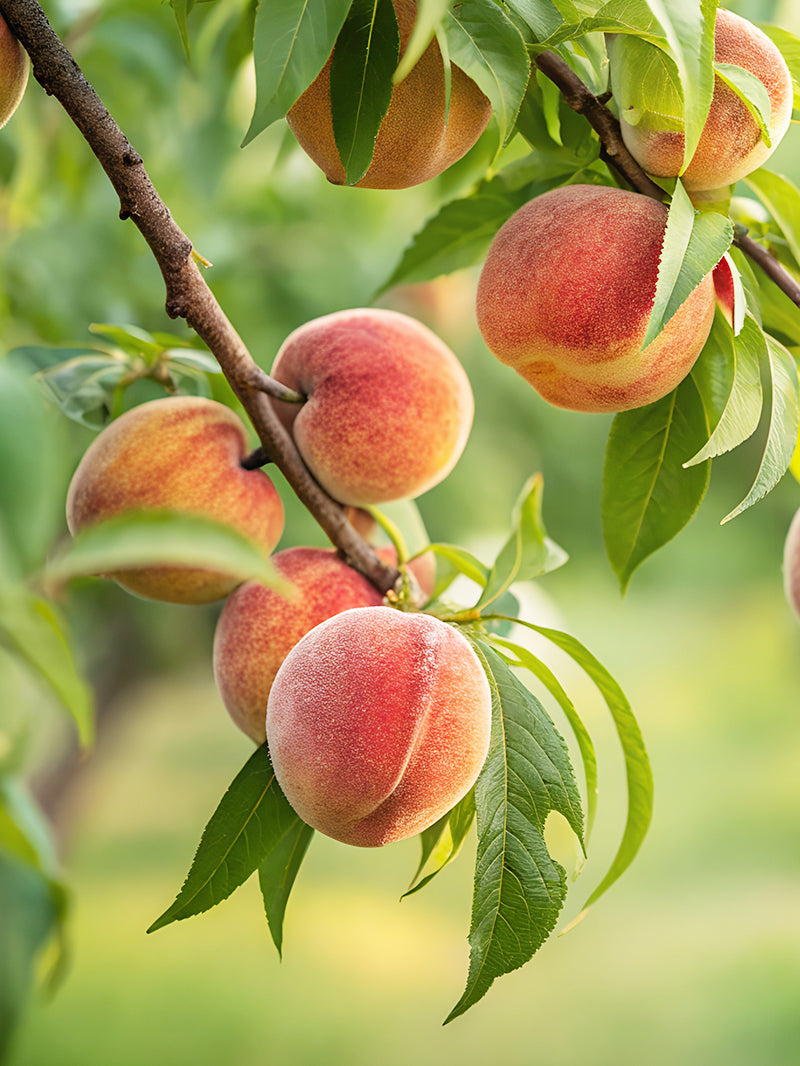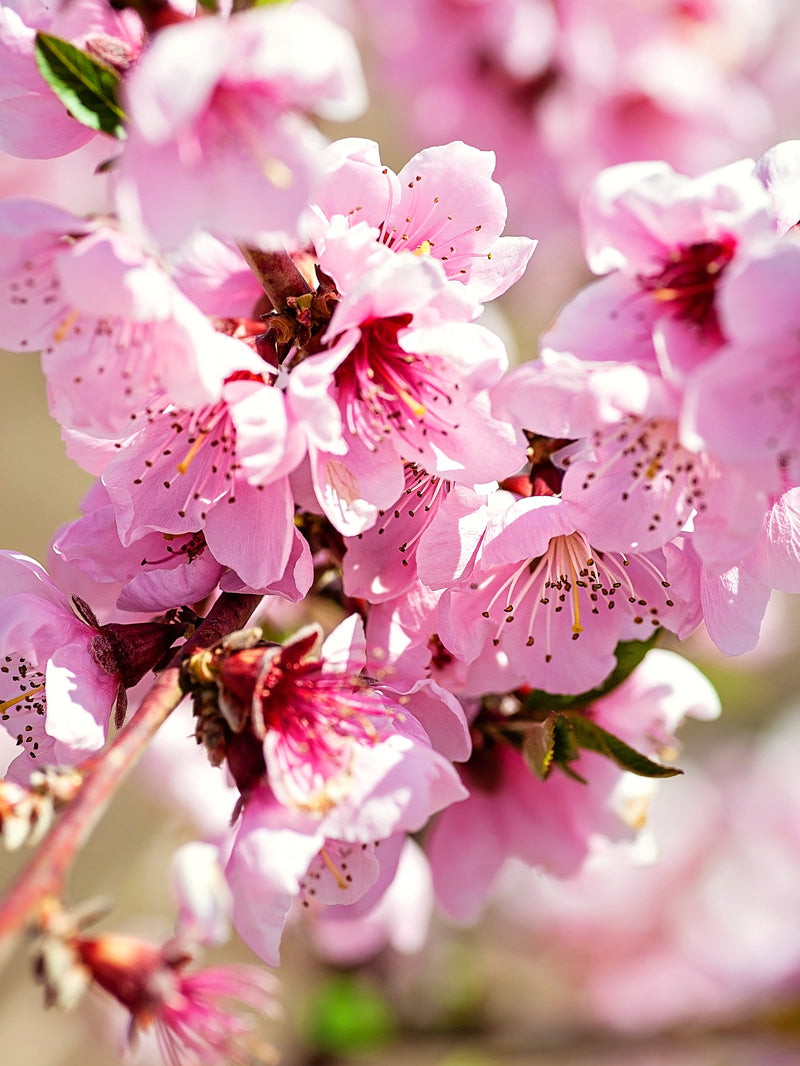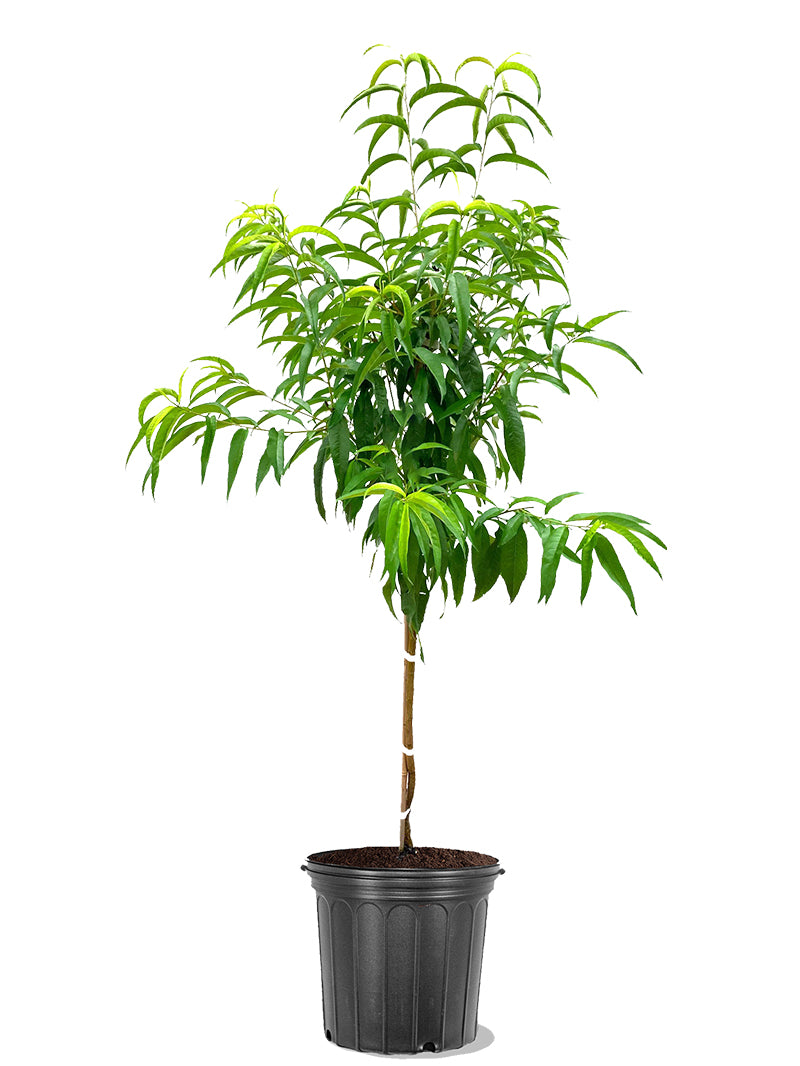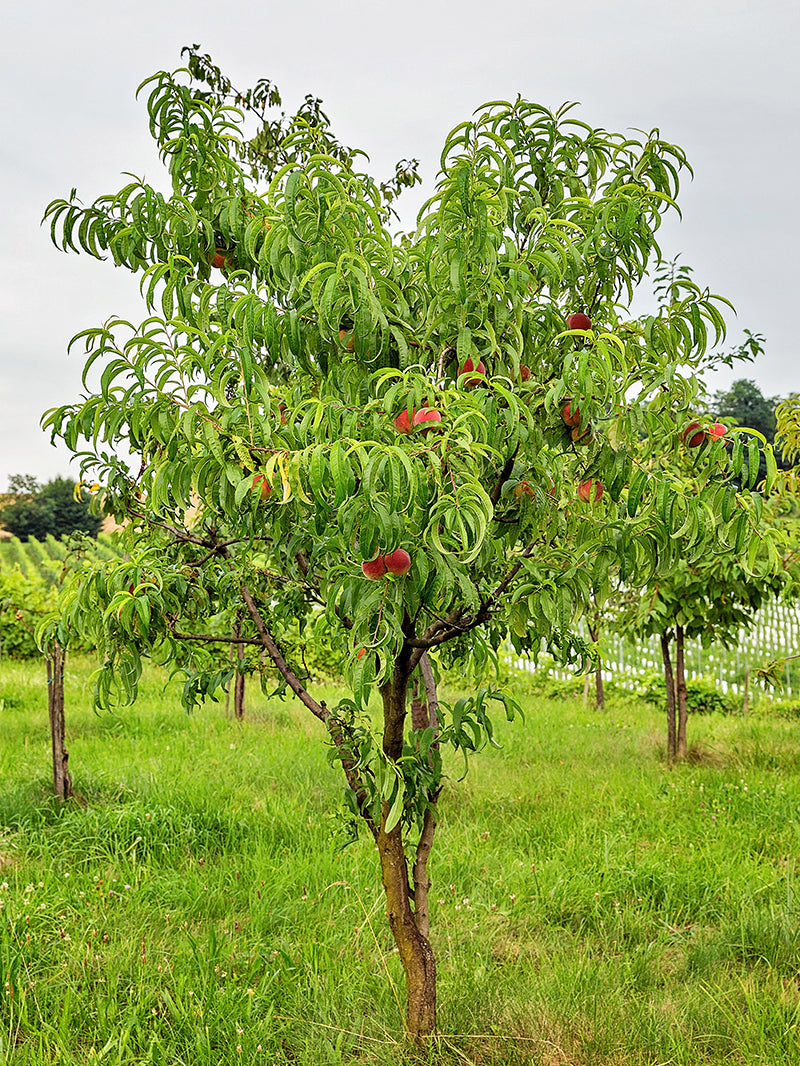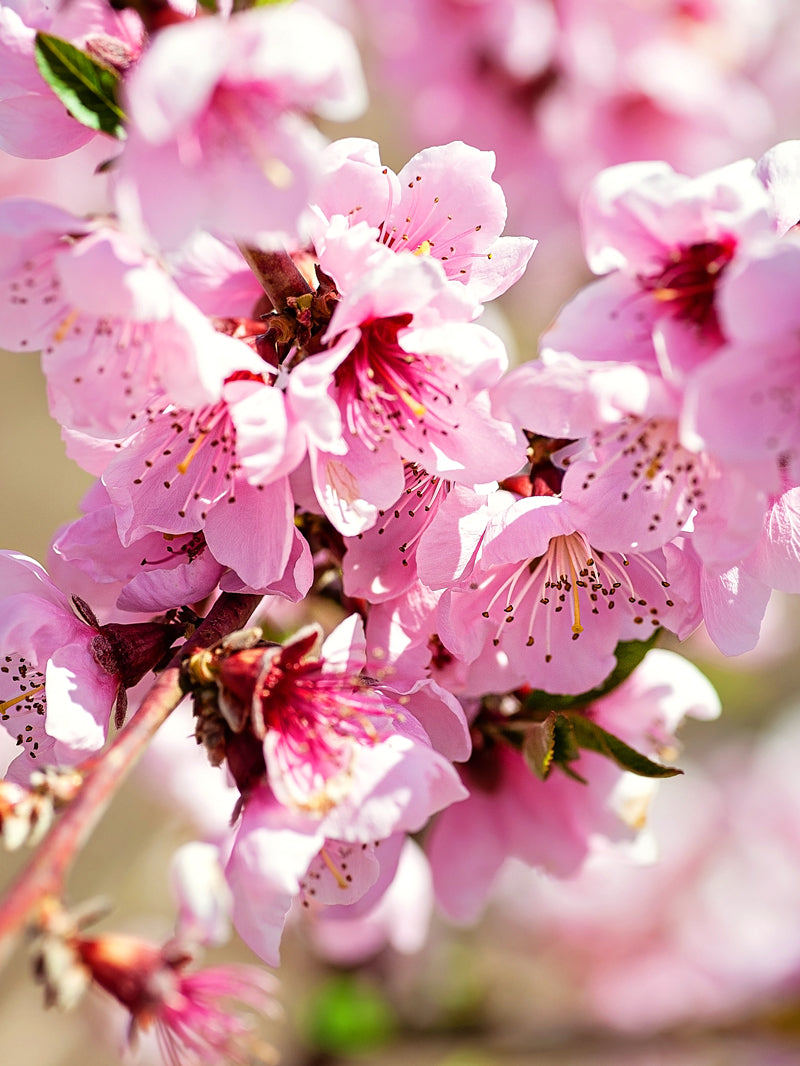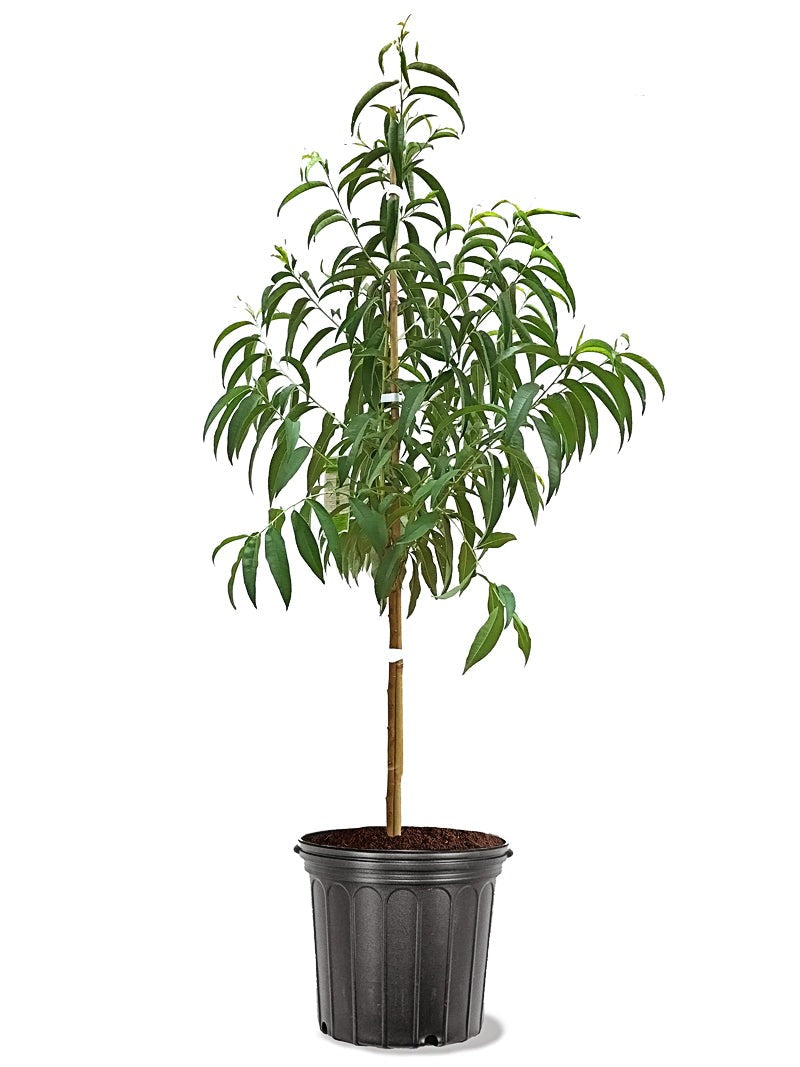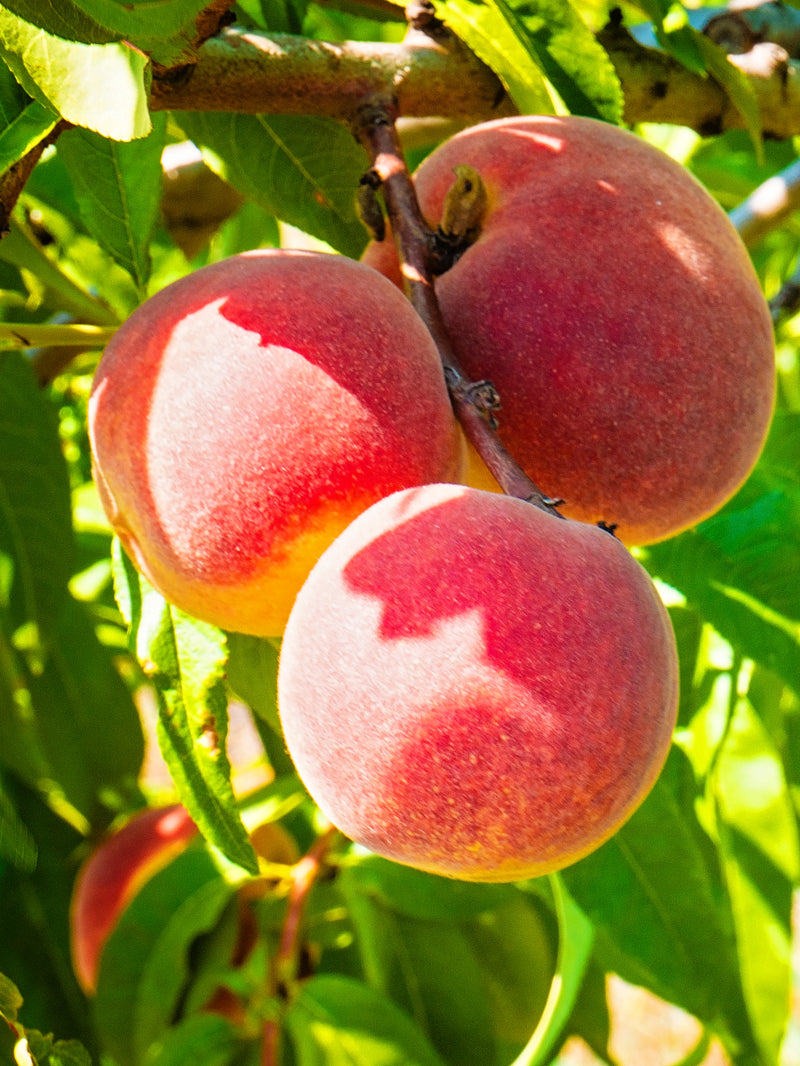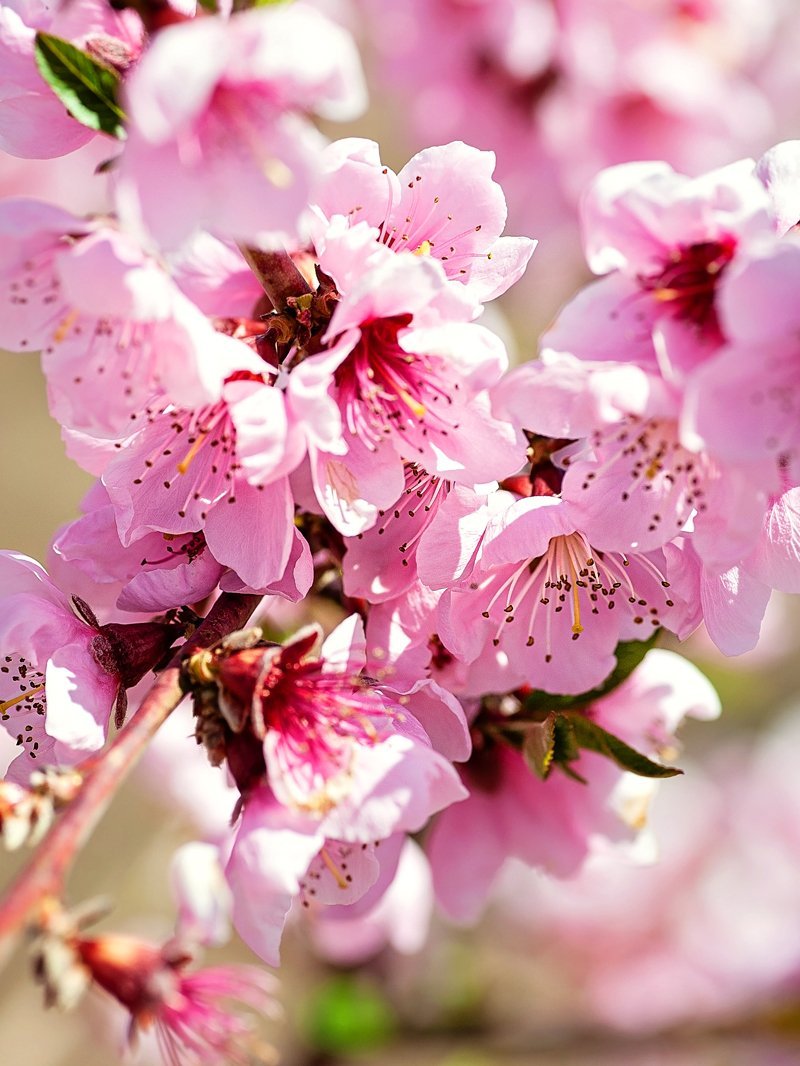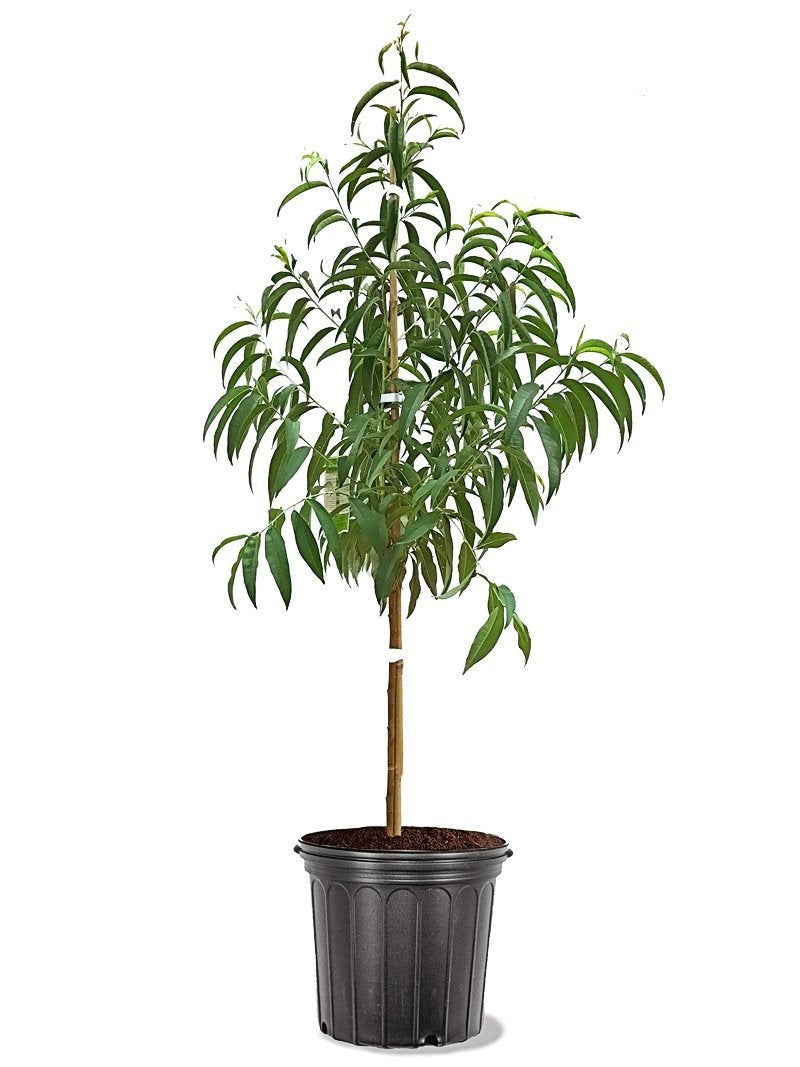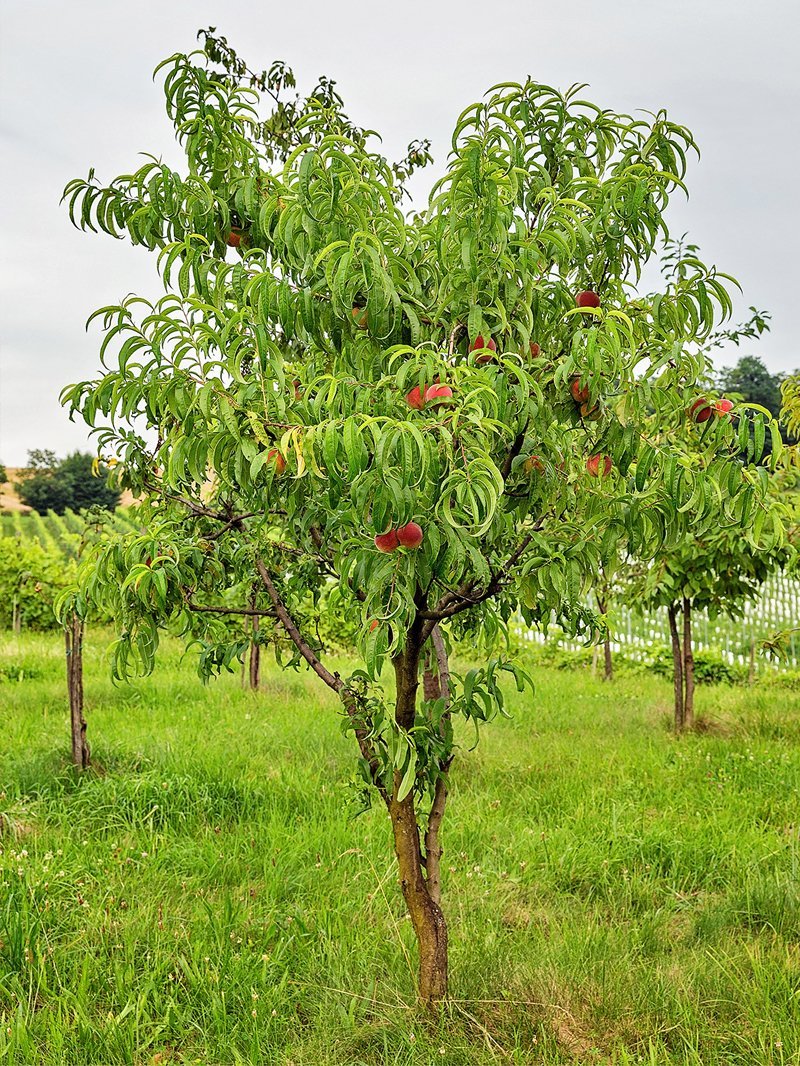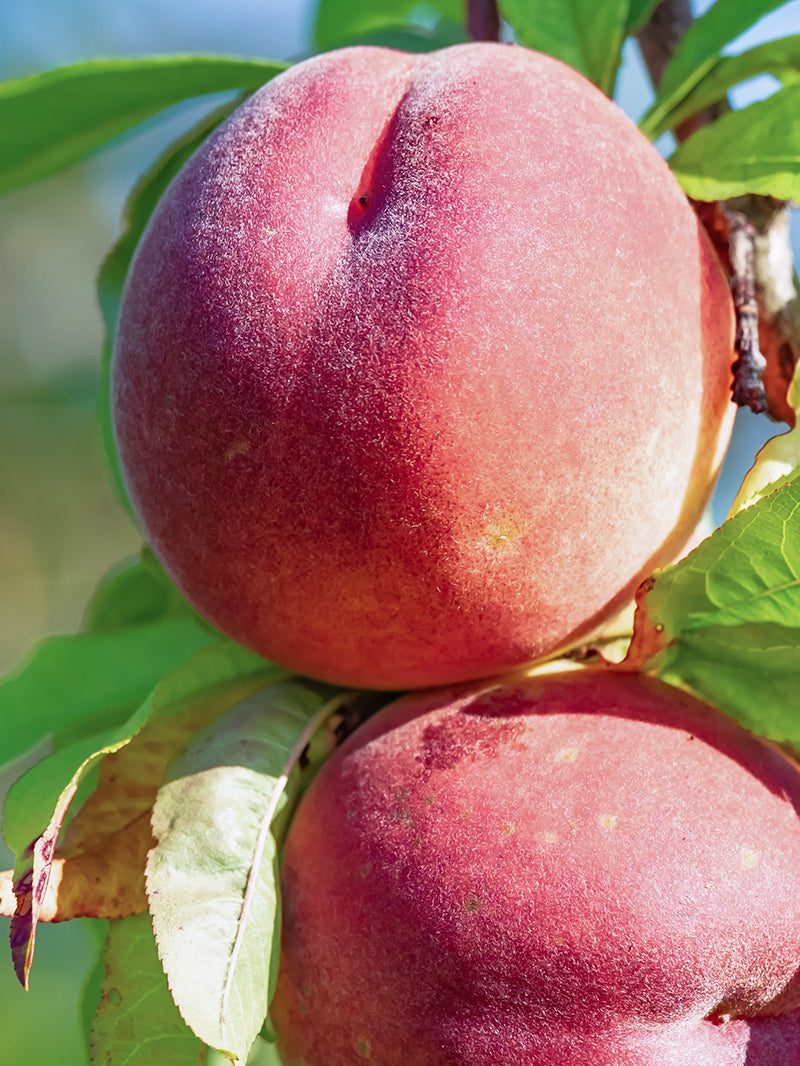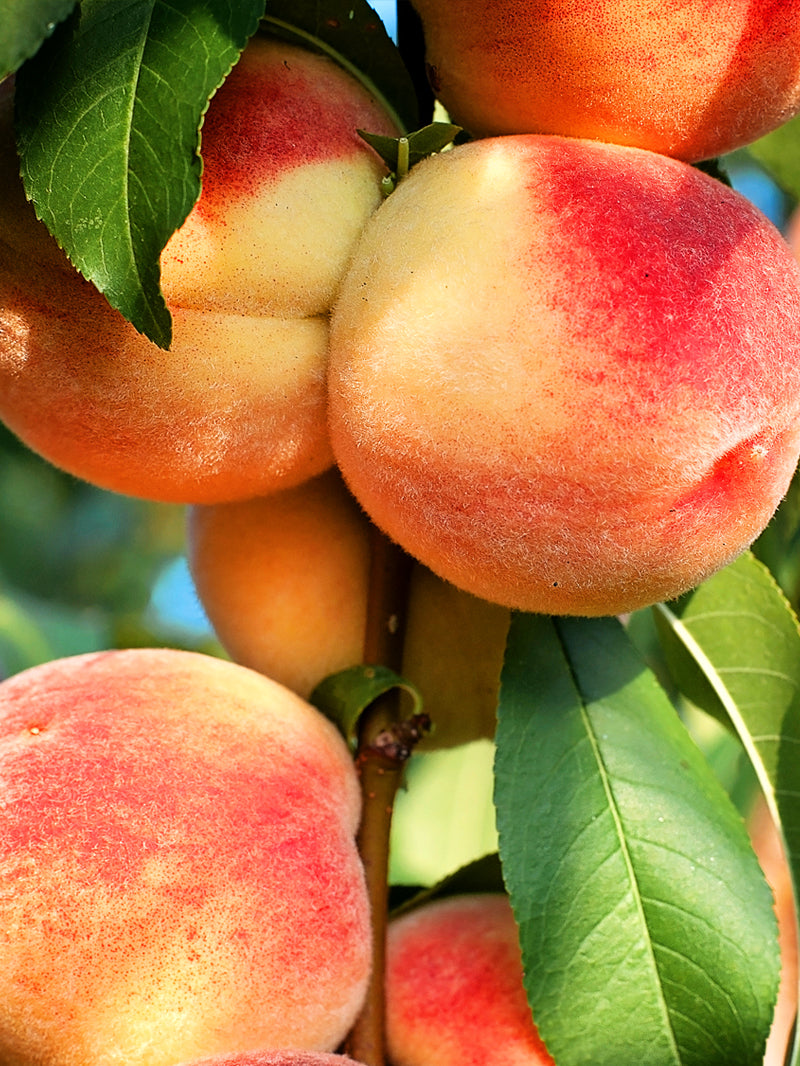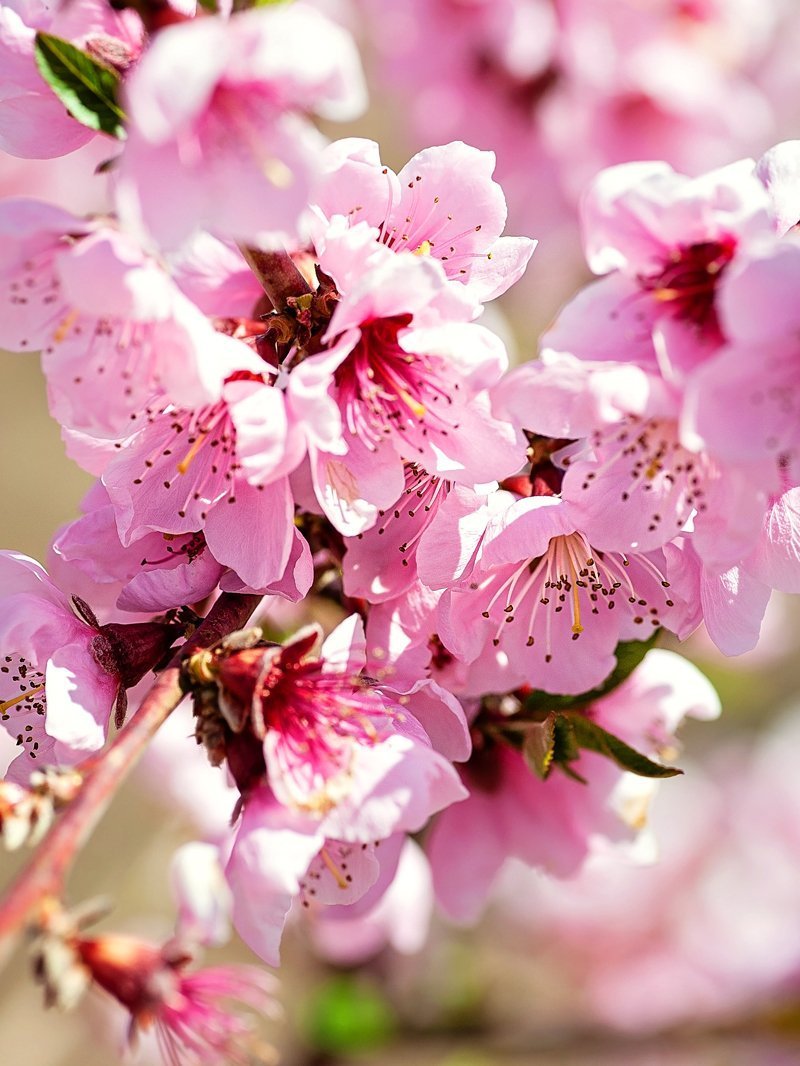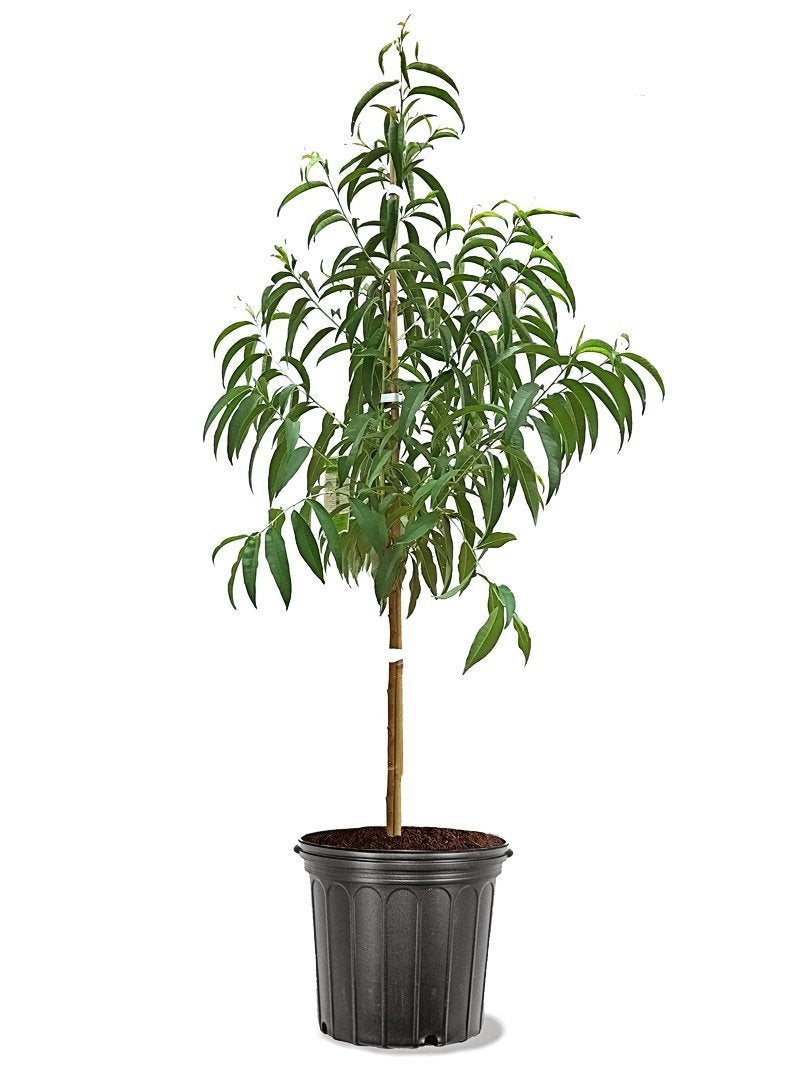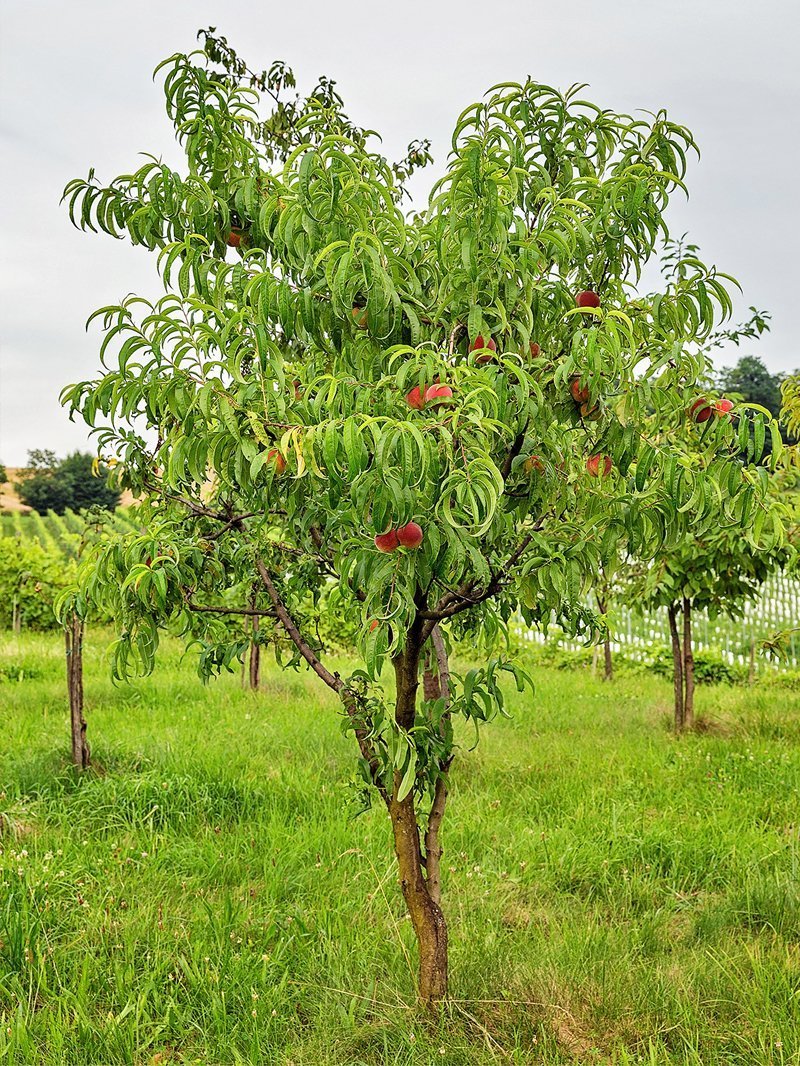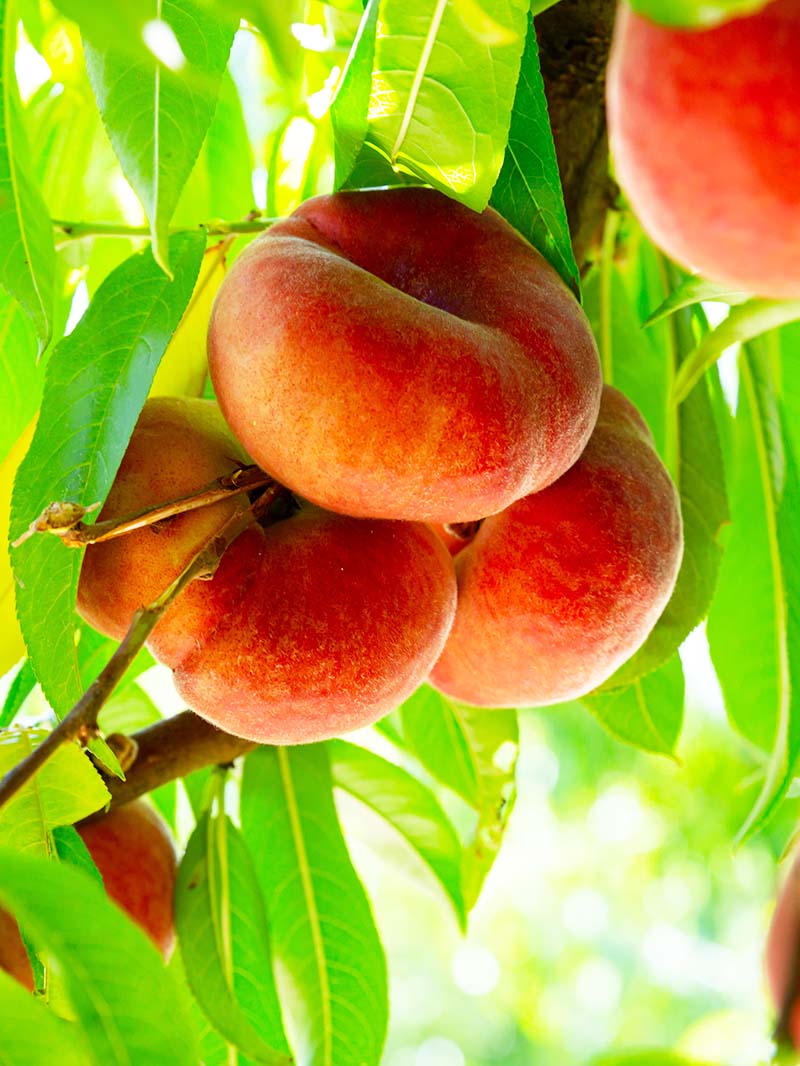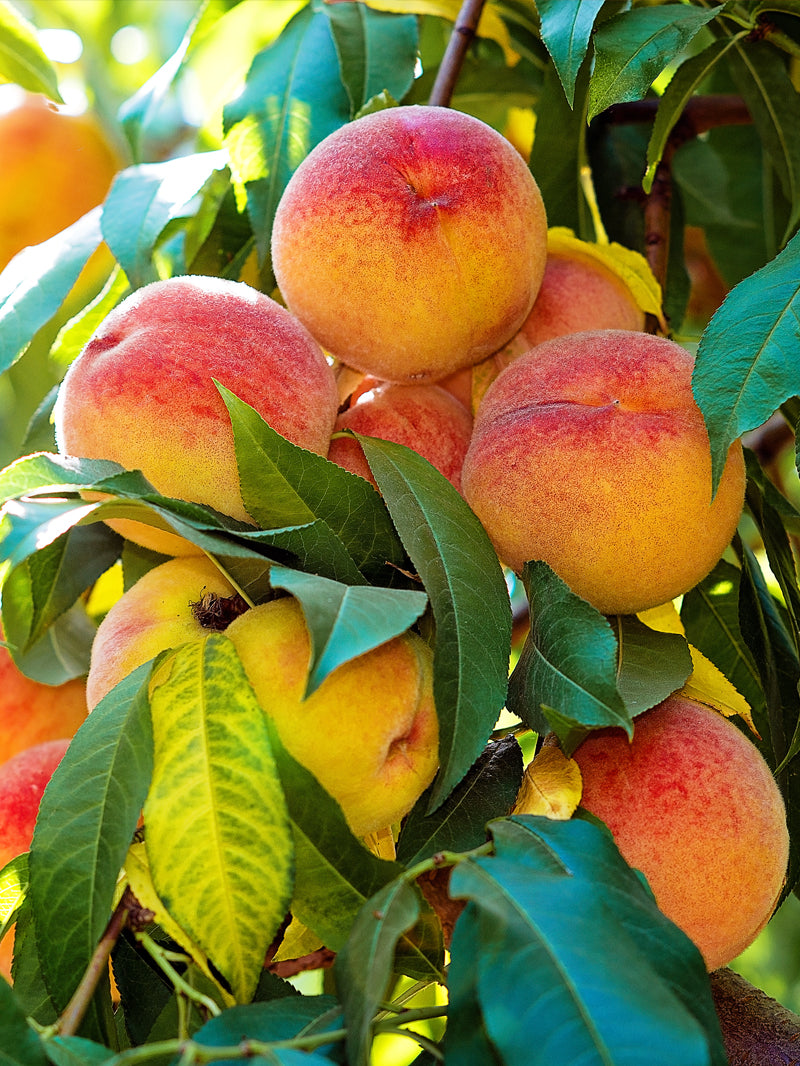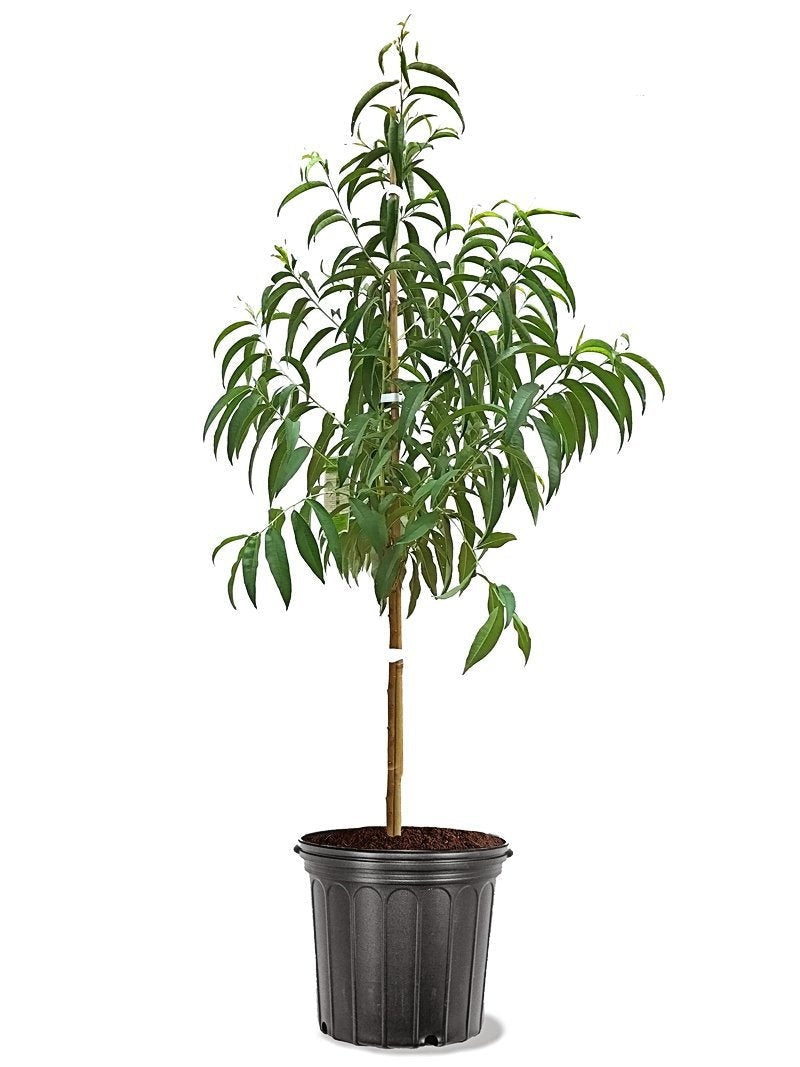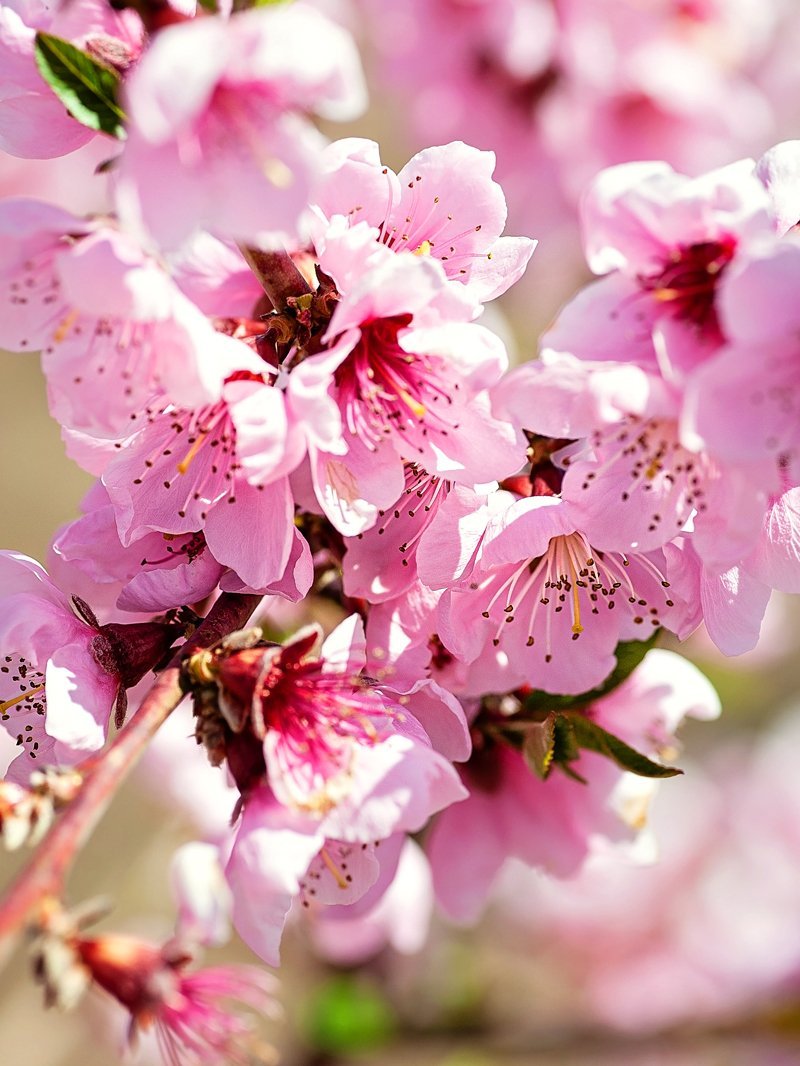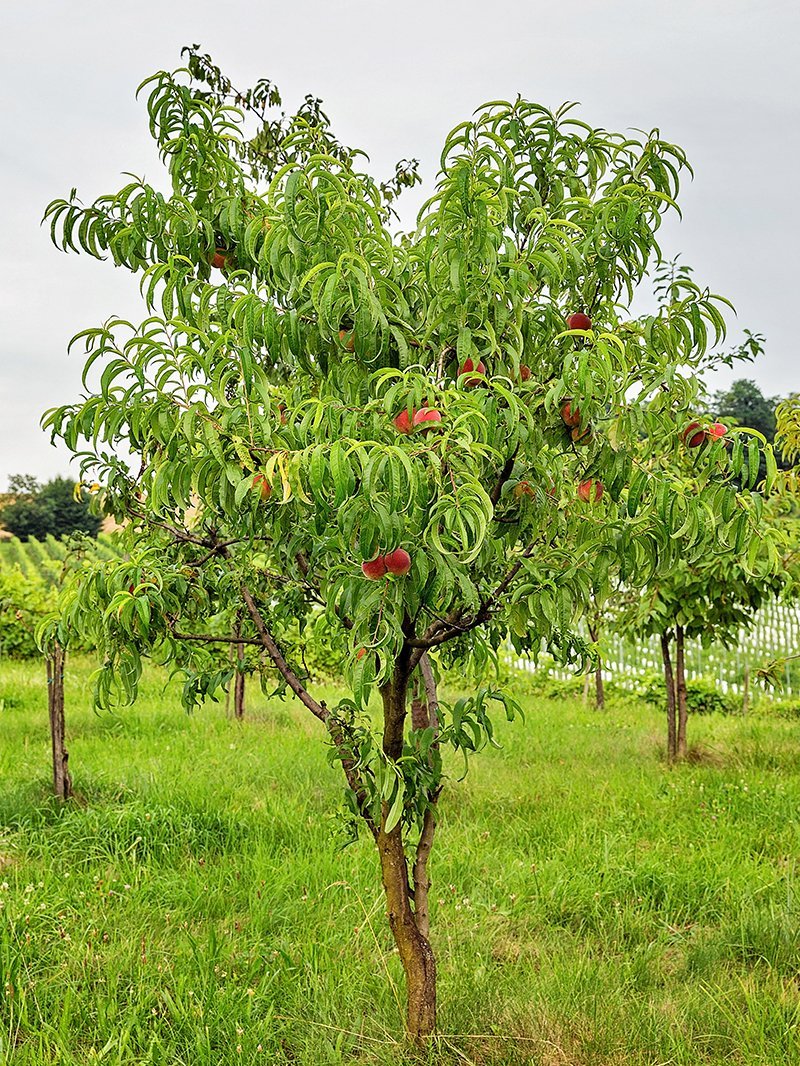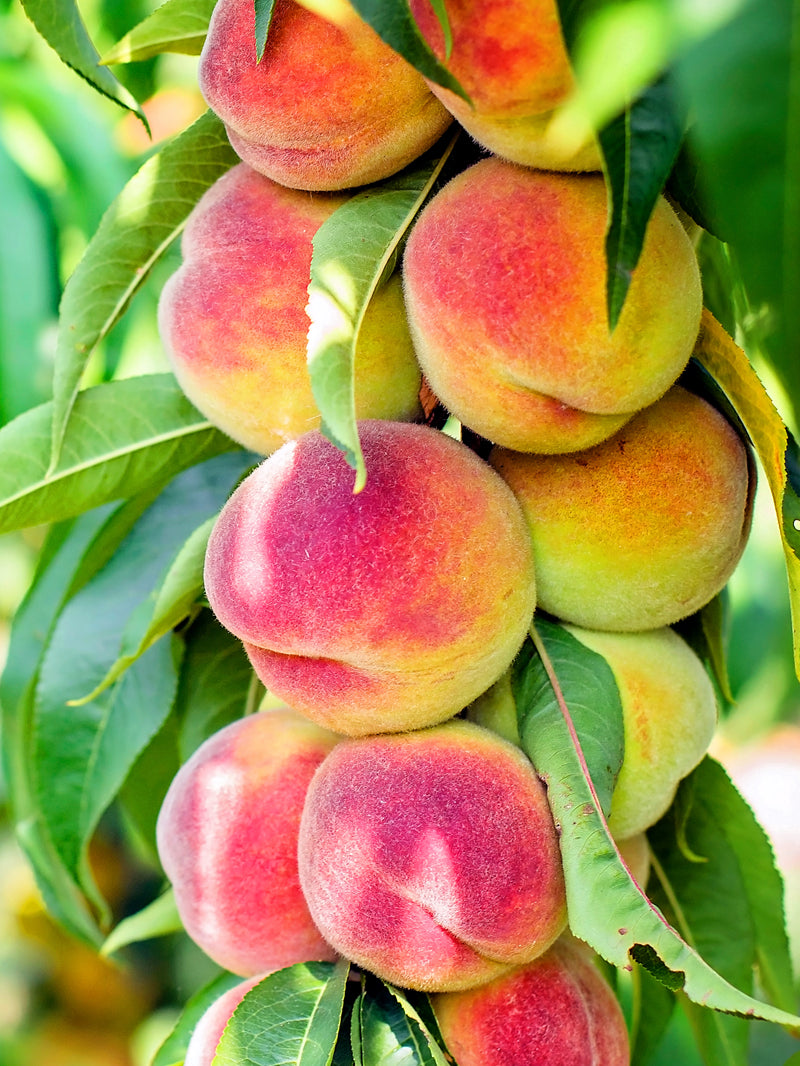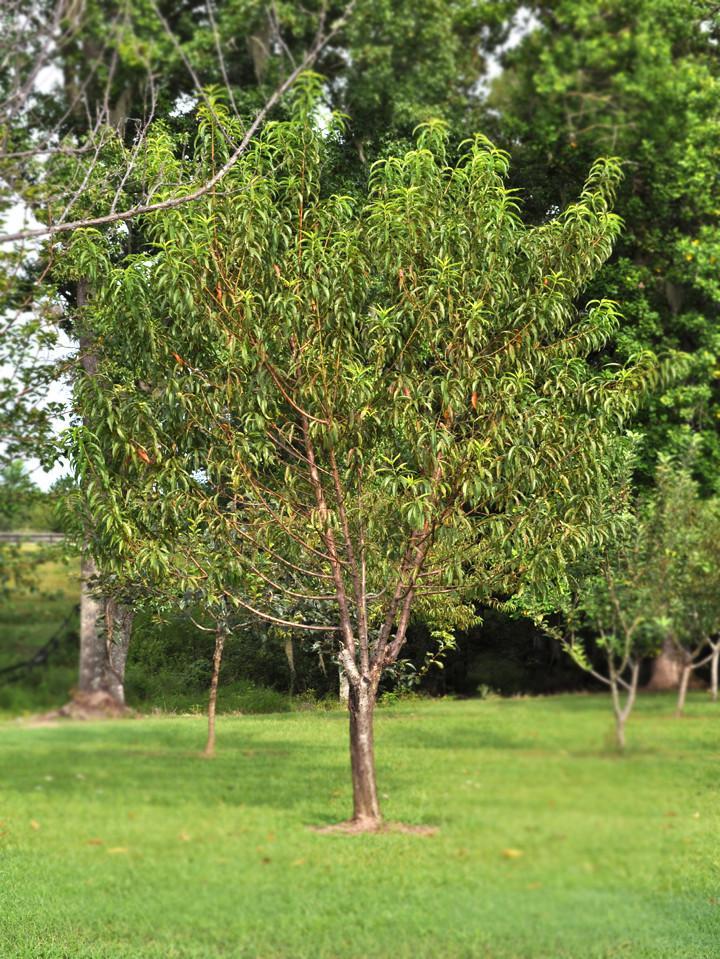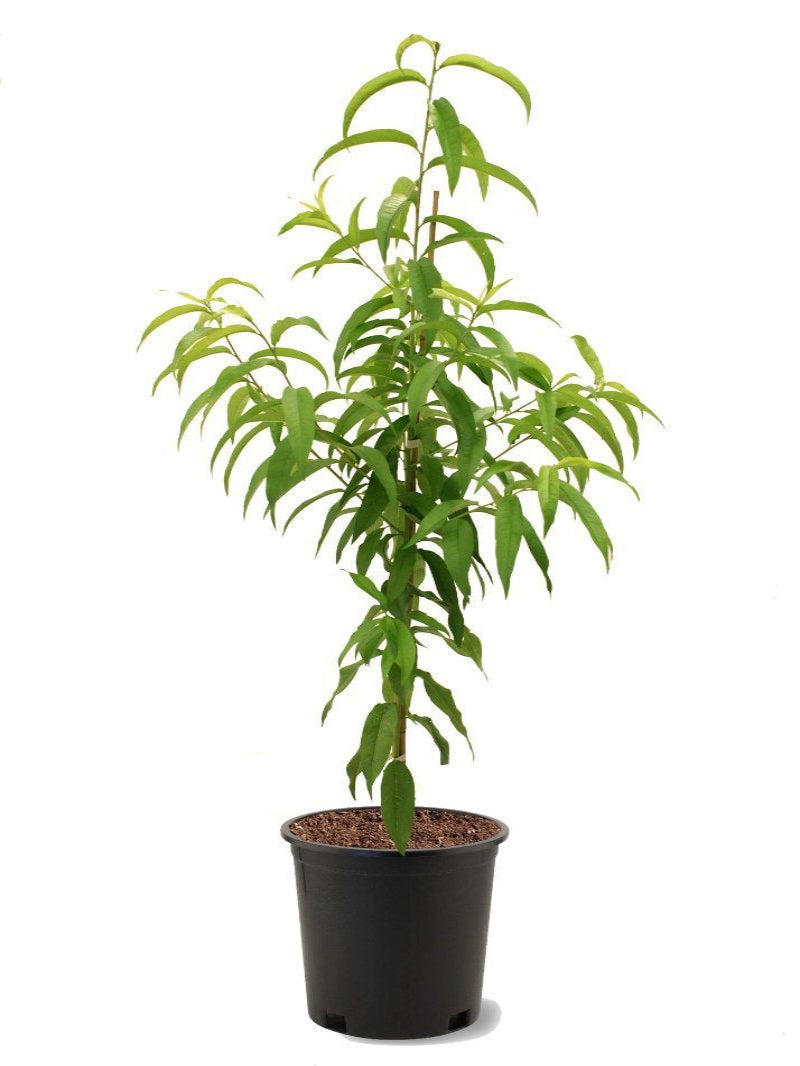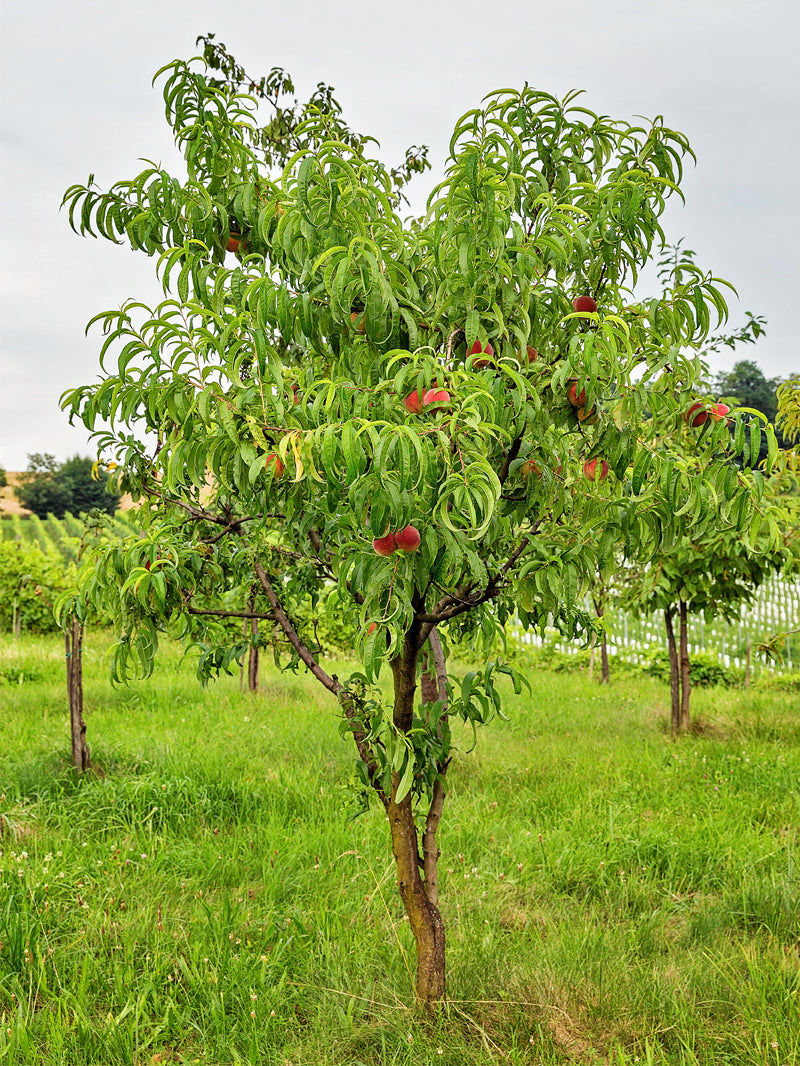
Planning your peach tree site
When picking a location for your tree, try to find a well-drained area with sandy loam soil. This soil type is the best for your plants, but as long as there is good drainage your tree should thrive. Place your tree in full sun for the best growth and production rate. Avoid frost pockets- trees may be damaged by unseasonable frosts.
Soil Prep for Your Peach Tree
It’s time to start digging! First, you will need to dig a hole three times the width of the size of the pot, and just as deep as the root ball. Peaches prefer slightly acid soil (pH 6.0-6.8) and thrive in lightweight loamy, well-draining soil. It is vital to not plant peach trees in low spots in the landscape where water pools, as this can contribute to problems like root rot, which can cause the demise of your tree. Peach trees cannot survive in waterlogged soil, so up to two feet of sandy, loamy, fertile topsoil works best, even if the subsoil contains a bit more clay. Spacing for peach trees should generally be 20 feet apart.
If desired, construct a water basin at the base of the tree about 36 inches in diameter. Mulch in the spring & summer time should be about 4-6 inches deep. Keep mulch a few inches away from the trunk of the tree. Good mulch for peaches is either wood chips or partially composted sawdust.
To protect your tree, please provide a 4 foot diameter weed and grass-free area. This will provide a water basin and minimize anything from taking water and nutrients from the tree. During spring and summer, 4-6 inches of mulch should be placed a few inches away from the trunk to provide good air circulation. The best mixture of mulch during spring is either wood chips or partially composted sawdust.
Fertilizer for Peach Trees
Since peach trees do not produce fruit during the first two years after planting, less fertilizer is required than is needed for mature fruit-bearing trees. Visual indicators, such as leaf discoloration and weak growth, are symptoms of nutrient deficiency. Perform a soil test before planting to identify soil factors, such as pH that may cause certain nutrient deficiencies.
Mature peach trees mostly require nitrogen (N) and potassium (K), the two nutrients found at higher concentrations in fruits. Phosphorus encourages root development and is essential for young trees.
WHEN TO FERTILIZE PEACH TREES:
In USDA Zones 8-9: Fertilize 3x a year— in late February, late May and late July/early August.
In USDA Zones 6-7: Further north, fertilize 1x a year in March or after the buds break.
ALL USDA Zones: NEVER fertilize after August as this will start new growth too late in the year and lead to frost damage.
Use a complete fertilizer, such as 16-4-8, 12-6-6, 12-4-8, or 10-10-10, during the tree’s first three years. Fertilize mature trees with the previously listed fertilizers or other N and K fertilizers such as potassium nitrate. Calcium, magnesium, and other plant micronutrients are used in relatively small amounts. Therefore, these nutrients are generally not required to be added unless a soil/leaf analysis reveals low or deficient levels. Application rates may vary. The fertilizer should be spread under the entire canopy, avoiding 5 inches around the trunk.
|
10-10-10 or 10-0-10 with minerals |
1 cup for each year of tree’s life -Max out at 9 cups for mature tree |
|
Espoma Citrus Tone (Organic) |
6 cups for 1 year old 10 cups for 2 year old (4-6 ft) 18 cups for 7-9 ft tree 24 cups for tree over 9 ft |
Water For Peach Tree
The first year is a critical time for your new peach tree. It has not had time to establish itself yet and therefore is not as strong as an older tree. To prevent the tree from dying, it must be watered twice a week in light soil and once a week in clay soil. Be sure to soak the entire root system deeply, this will take about 10-20 minutes. For best growth and production, peach trees should receive at least one inch of water a week. During dry spells, water is mandatory. If not properly watered during dry spells, fruit may drop prematurely. Keep at least 4 feet around the peach tree clear of grass and weeds, for less competition for water.
The total minimum water requirement for mature peach trees is about 36 inches per year. Under normal conditions a mature peach tree requires about 35 - 40 gallons of water per day during July and August.
Pruning Peach Trees
Peaches and plums in the South are usually pruned to an open center habit. When planting, you need to select 3 or 4 scaffold branches spaced equally around the trunk and remove other branches flush with the trunk.
During the second dormant season, top off the scaffold limbs about 36 inches from the trunk to let secondary branching begin. Any strong branches growing towards the center should be removed. This will let the tree have good air circulation in the center of the tree.
Training of your plant should continue for the first 5 years. Pruning is designed to train the tree to grow outward. This is done by removing the strong branches and water sprouts growing in the center. With the help of mold and hold cuts, your tree can be topped out at 7-8 foot. To do this top back the main scaffold limb to a weaker outward growing shoot. This will keep your tree at an easy picking height as well as stimulate new growth lower on the tree.
For a mature tree, pruning should take place during its dormant season. Thin out weak branches and head back long shoots as needed to maintain tree shape. Remove water sprouts. Remove any dead, damaged or diseased branches when pruning. Use mold and hold cuts to maintain easy picking heights.
To grow and keep growing the biggest fruit, thin back the small fruit to no more than 1 fruit per 6 inches of branch. This may not sound like a good idea, but in the end you will have the biggest fruit your tree can produce.
Shop our collection of peach trees and have them shipped right to your door!

